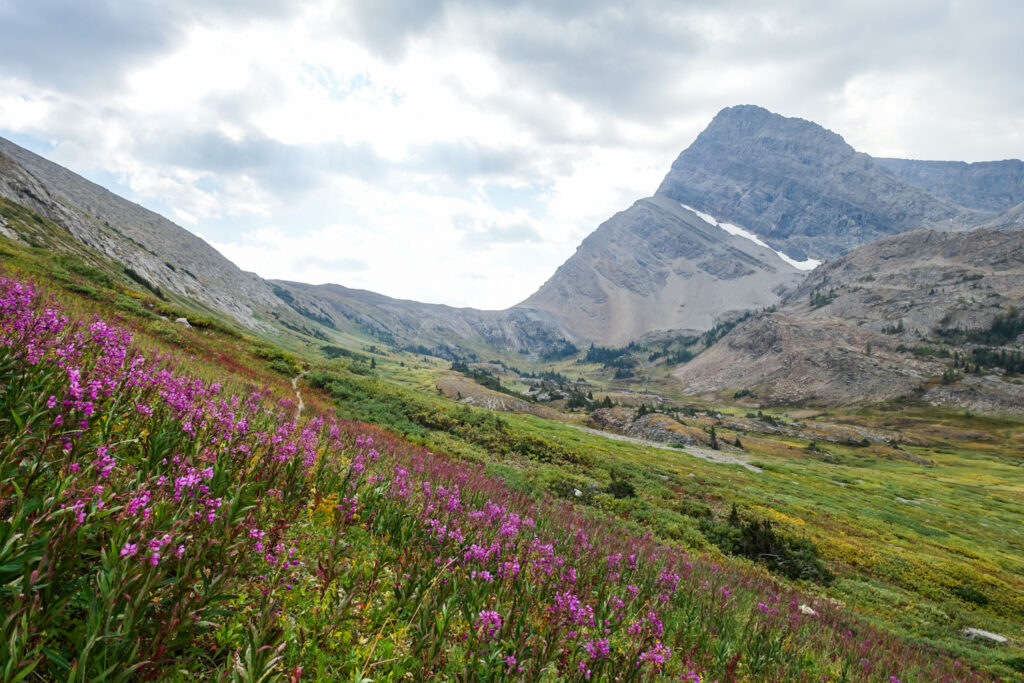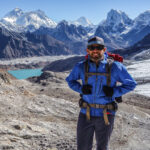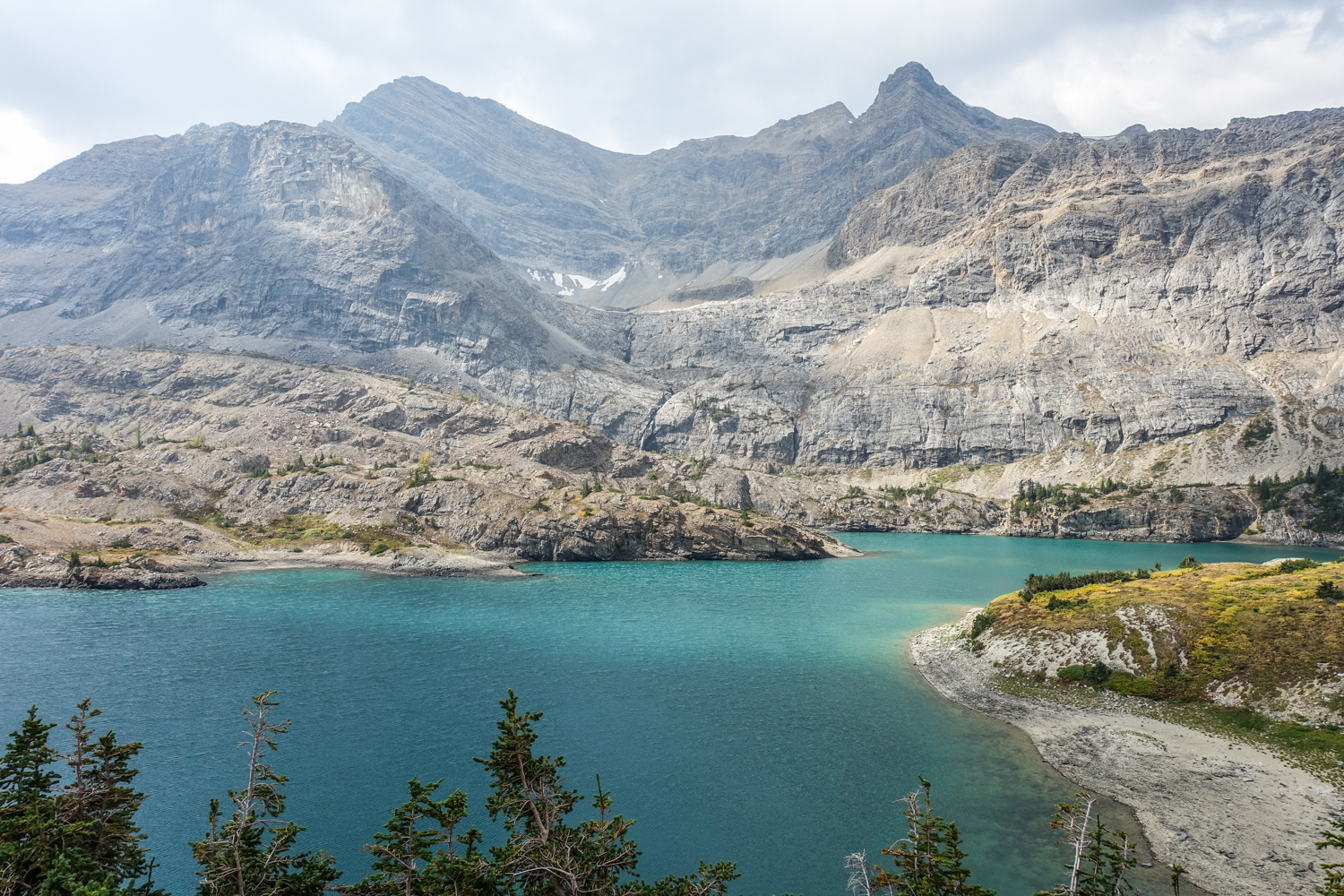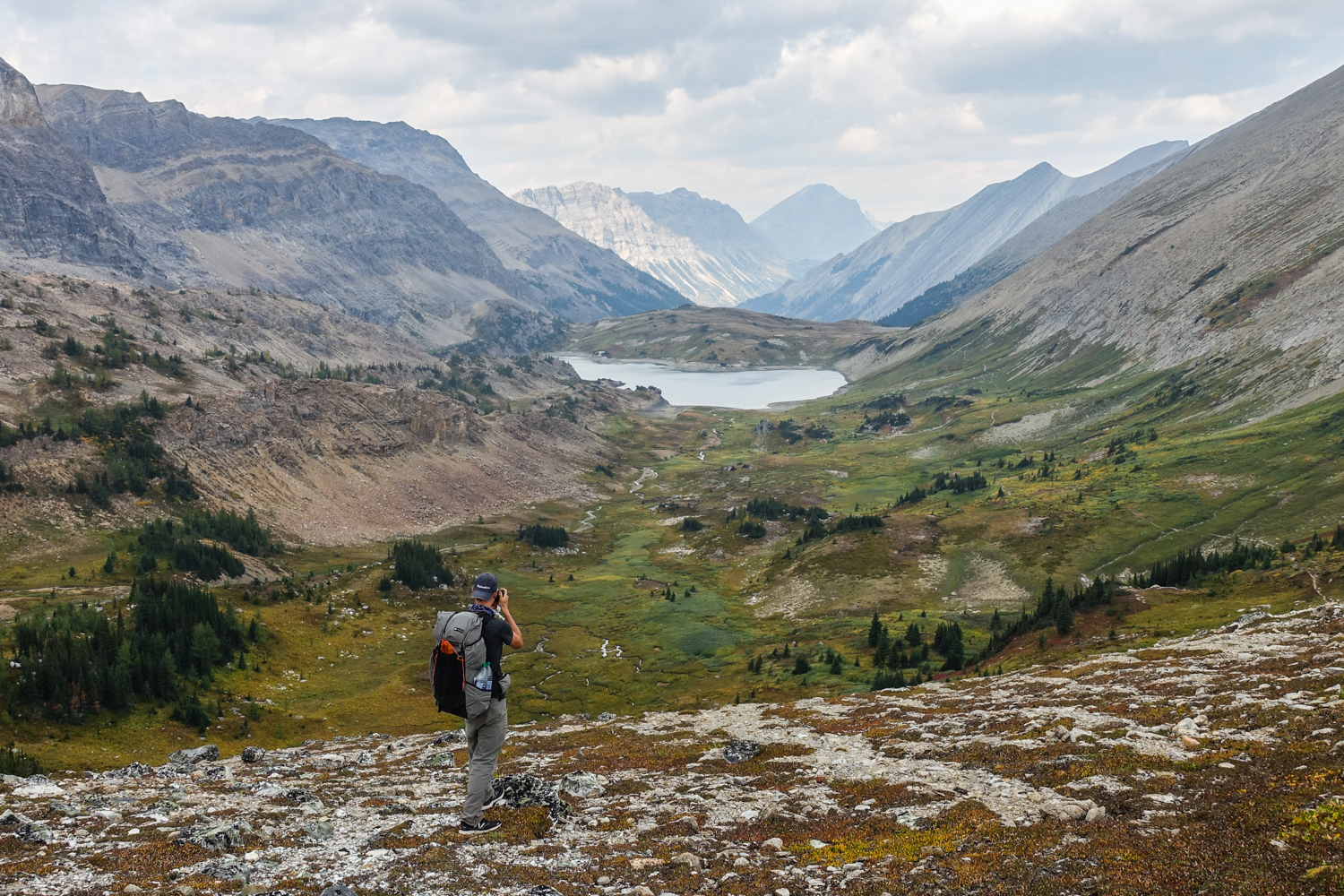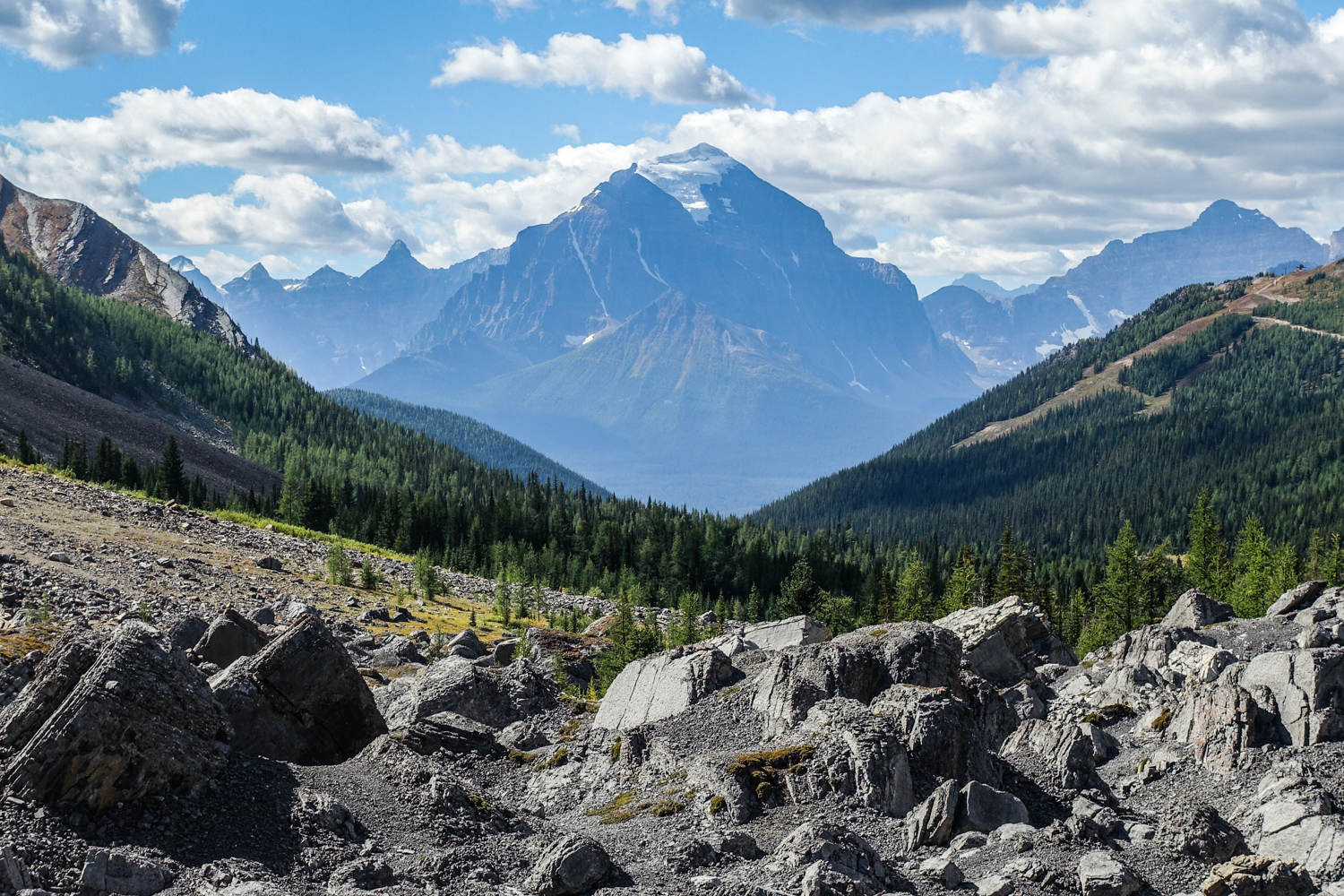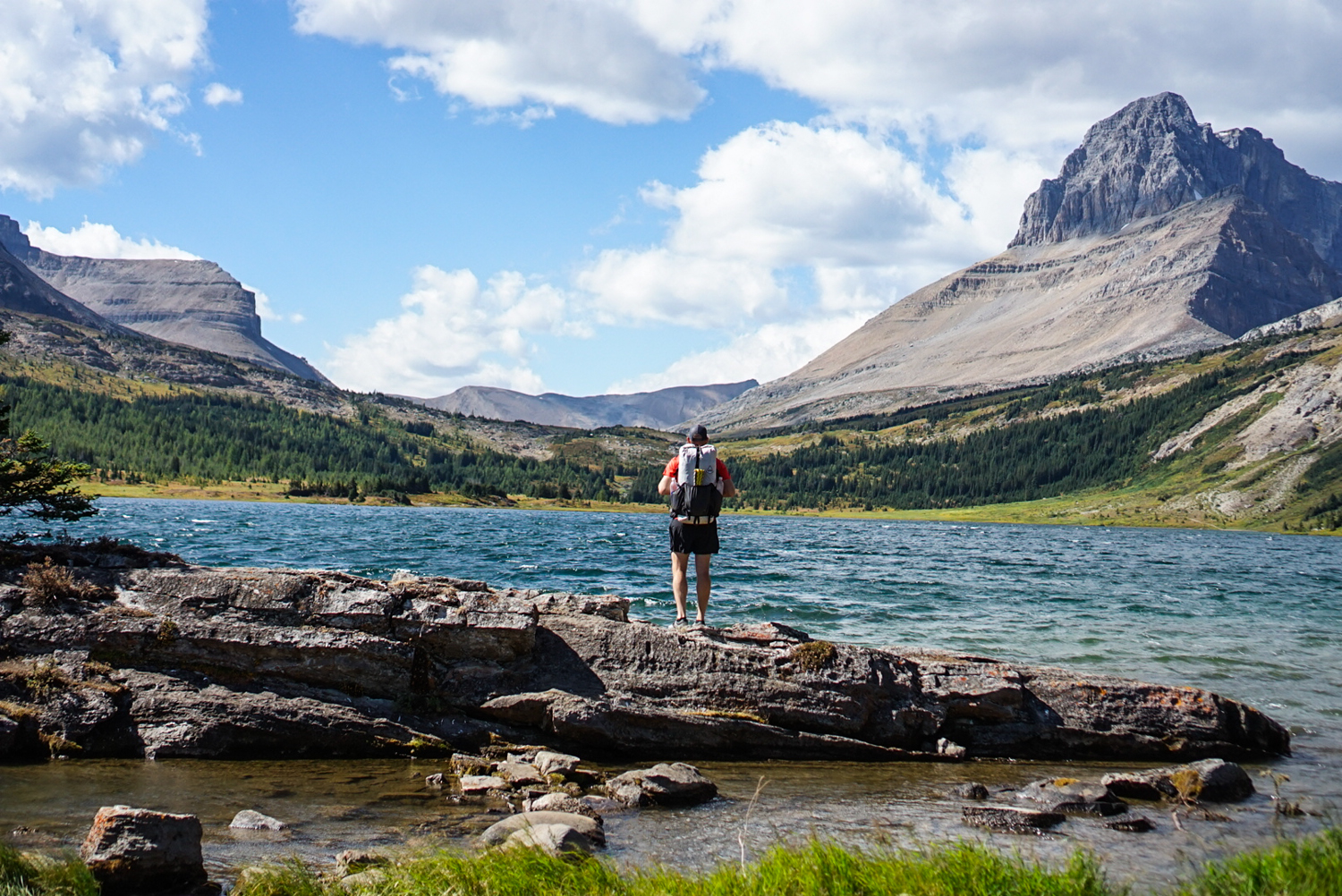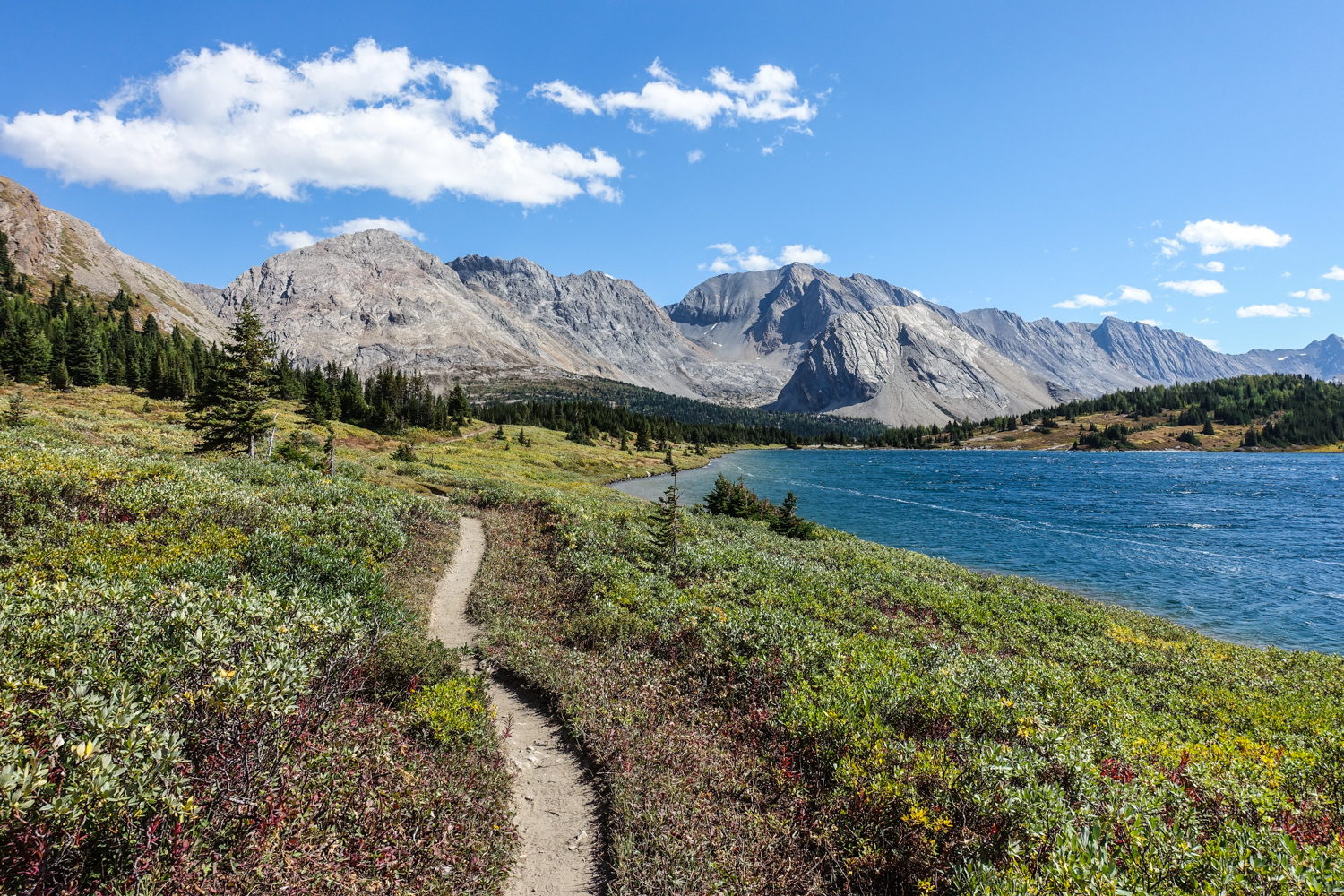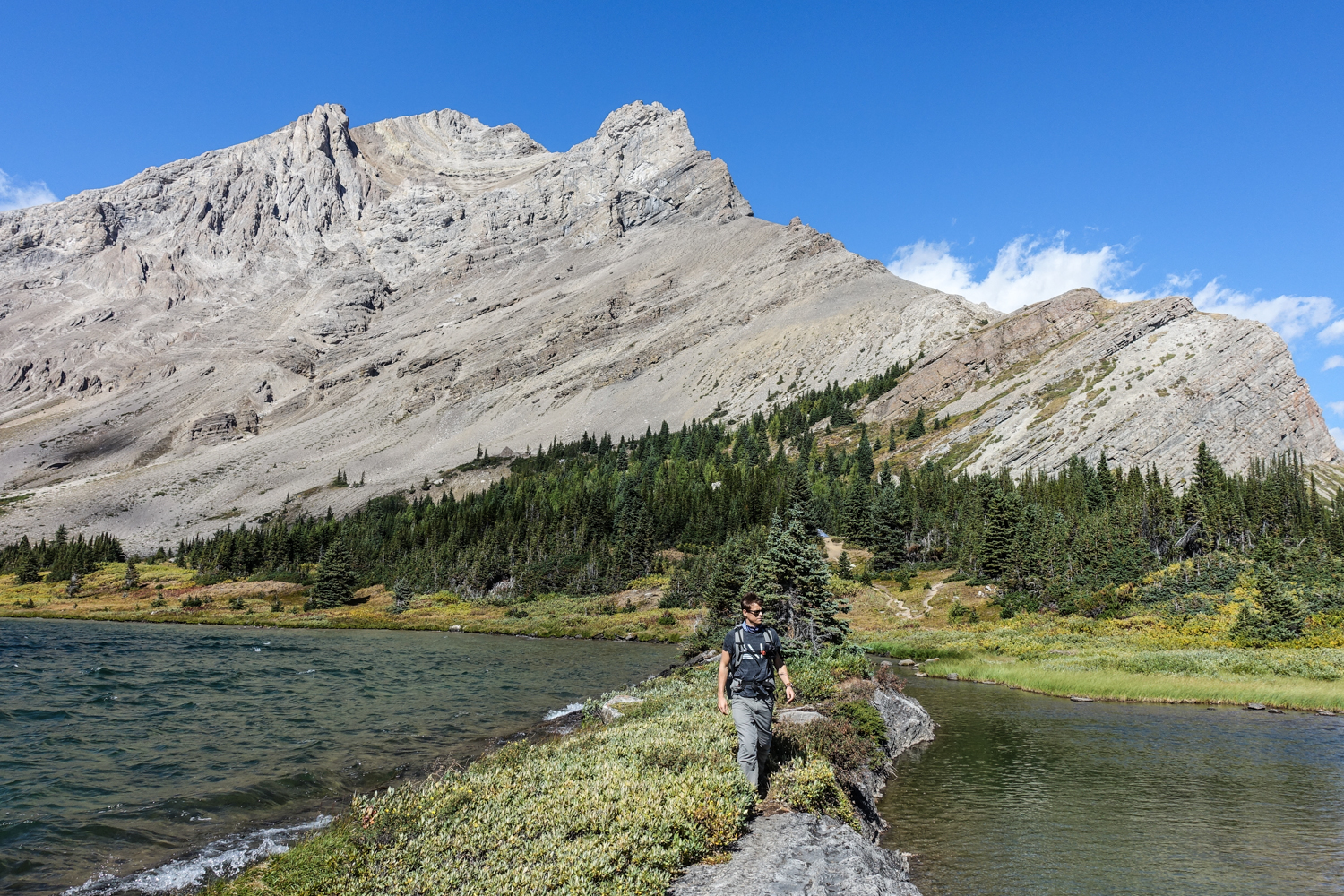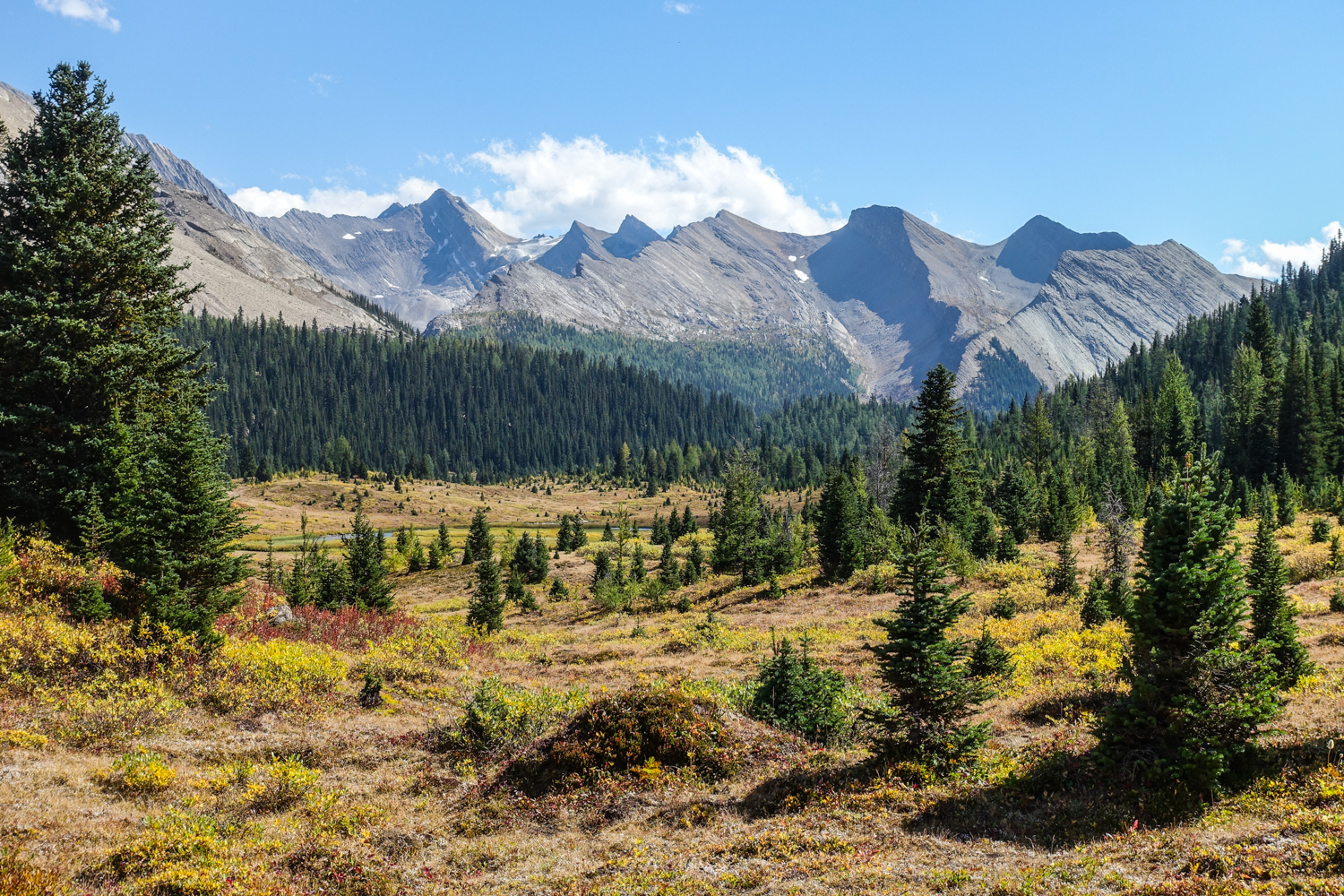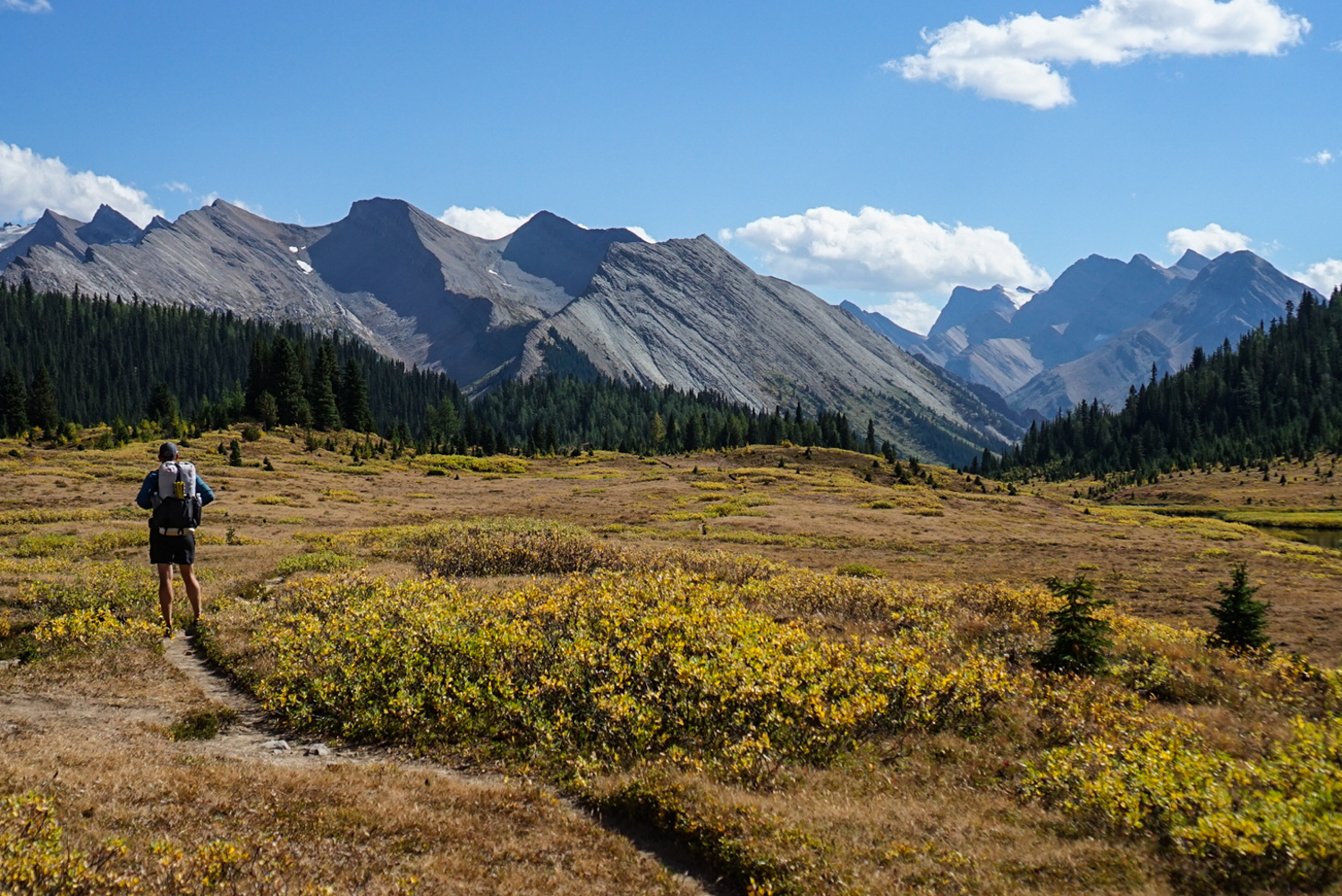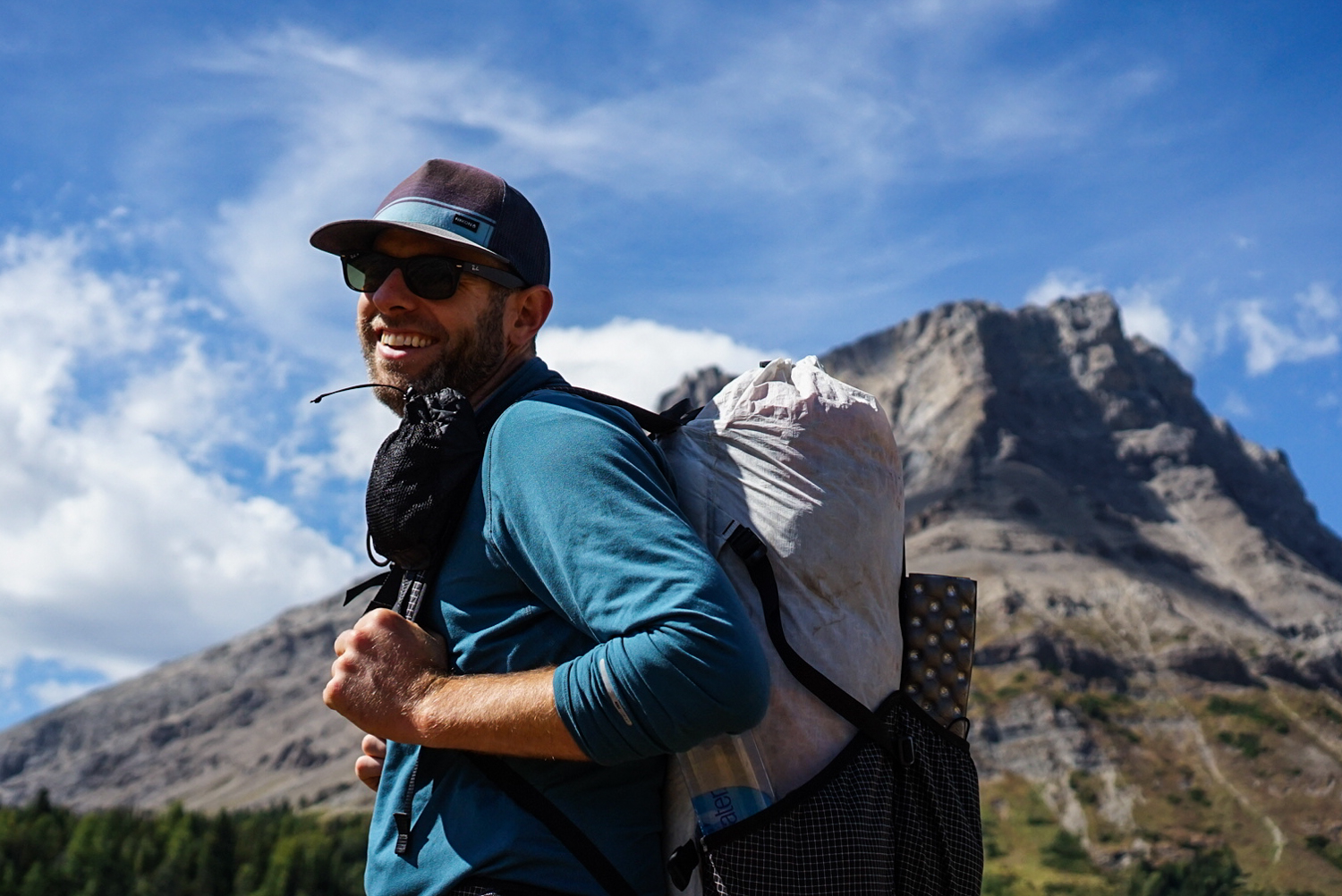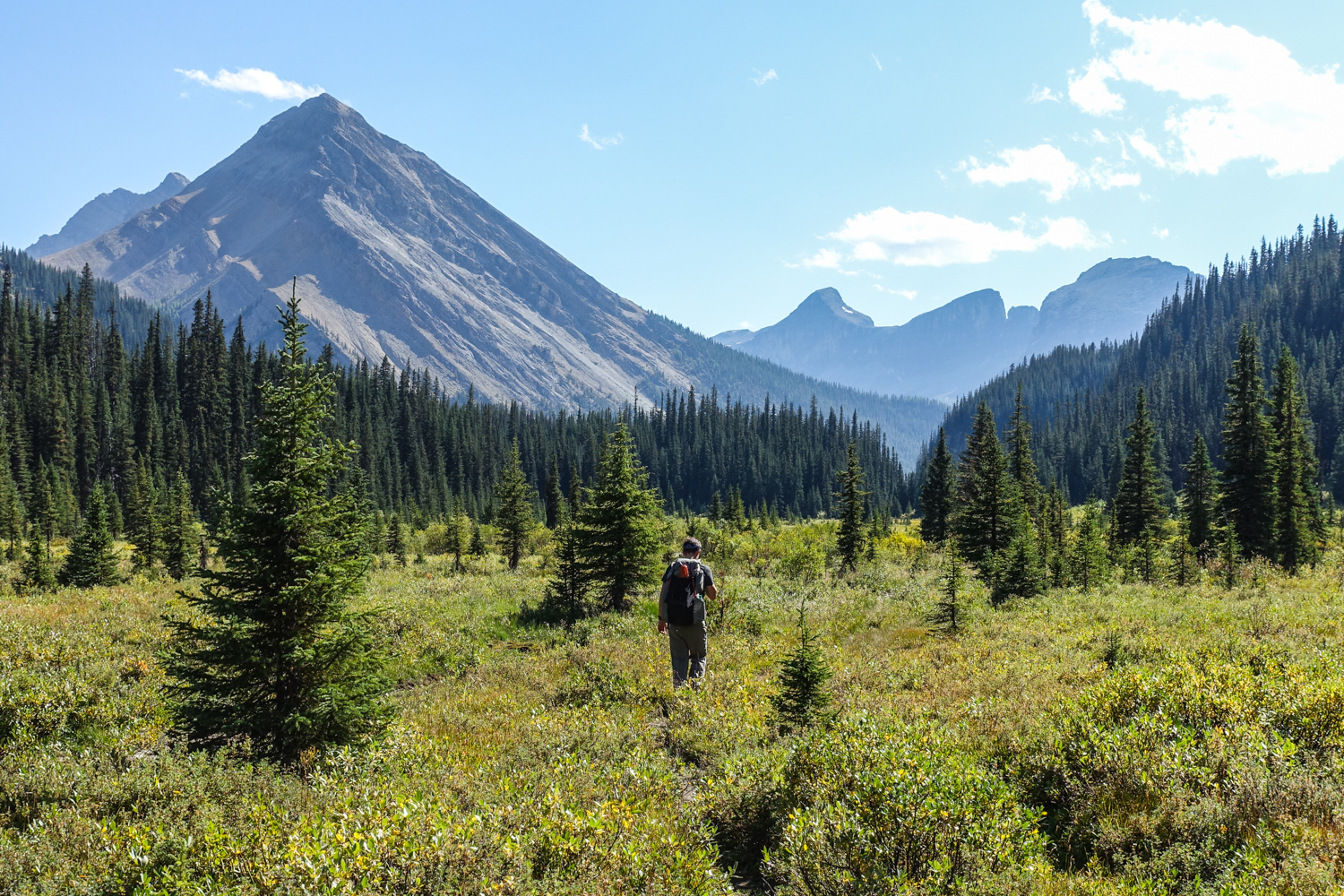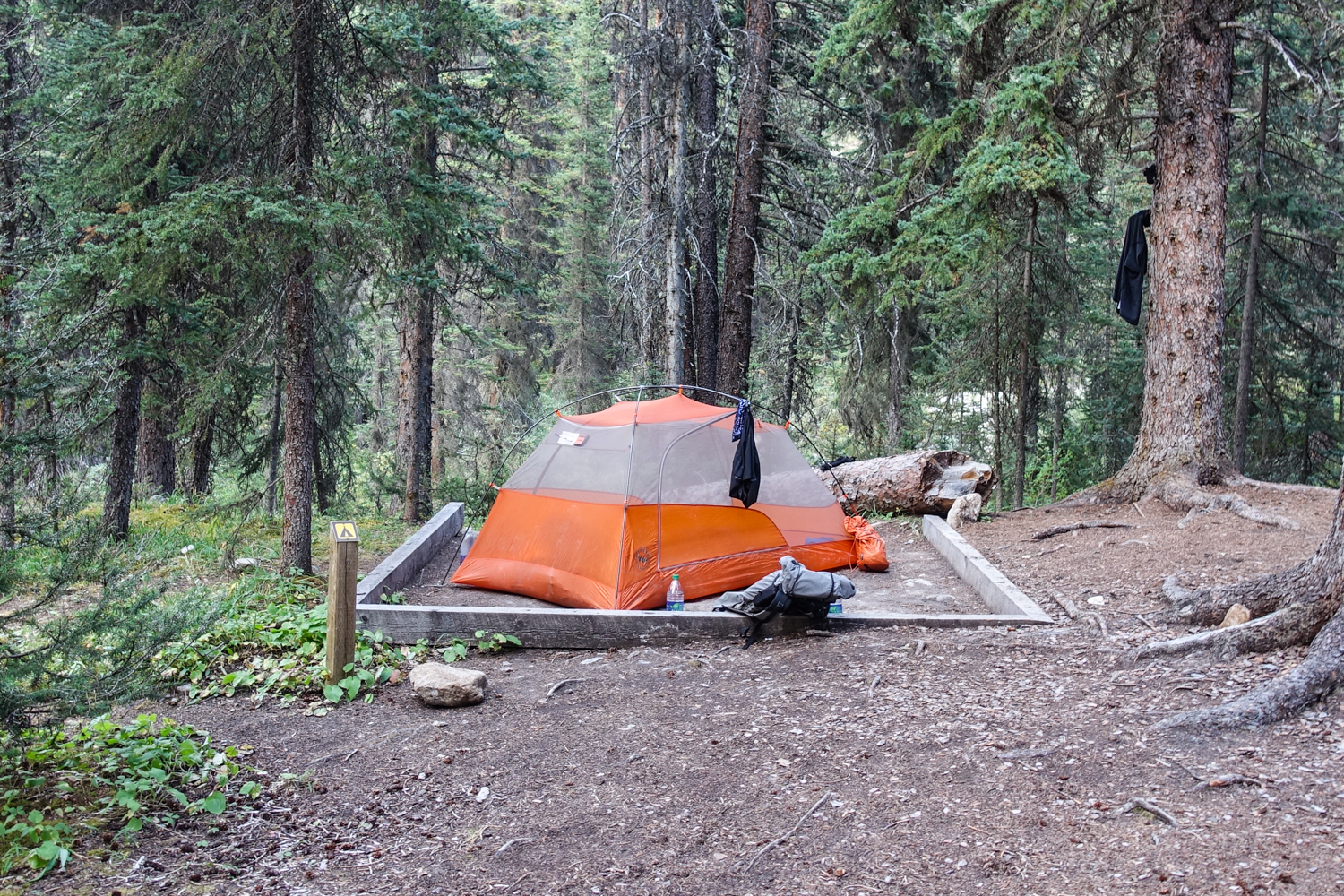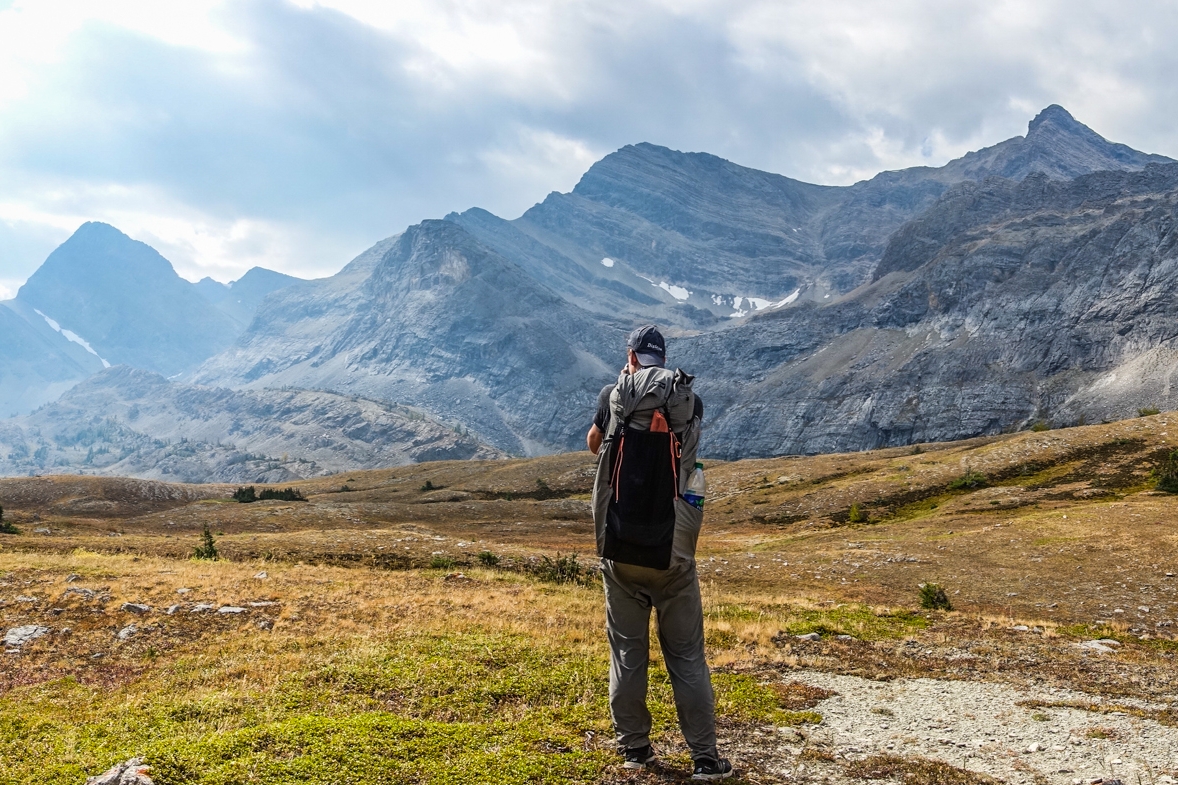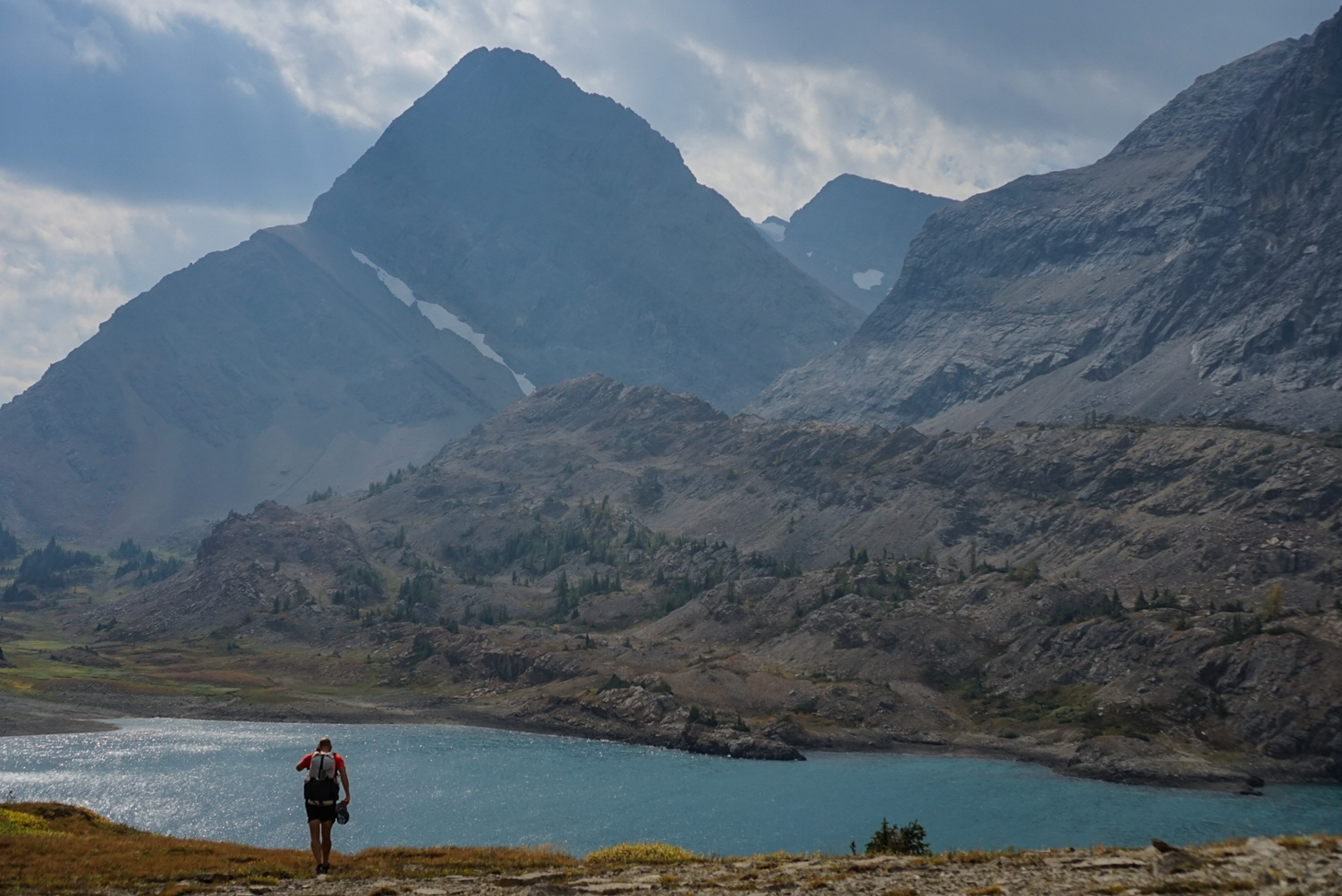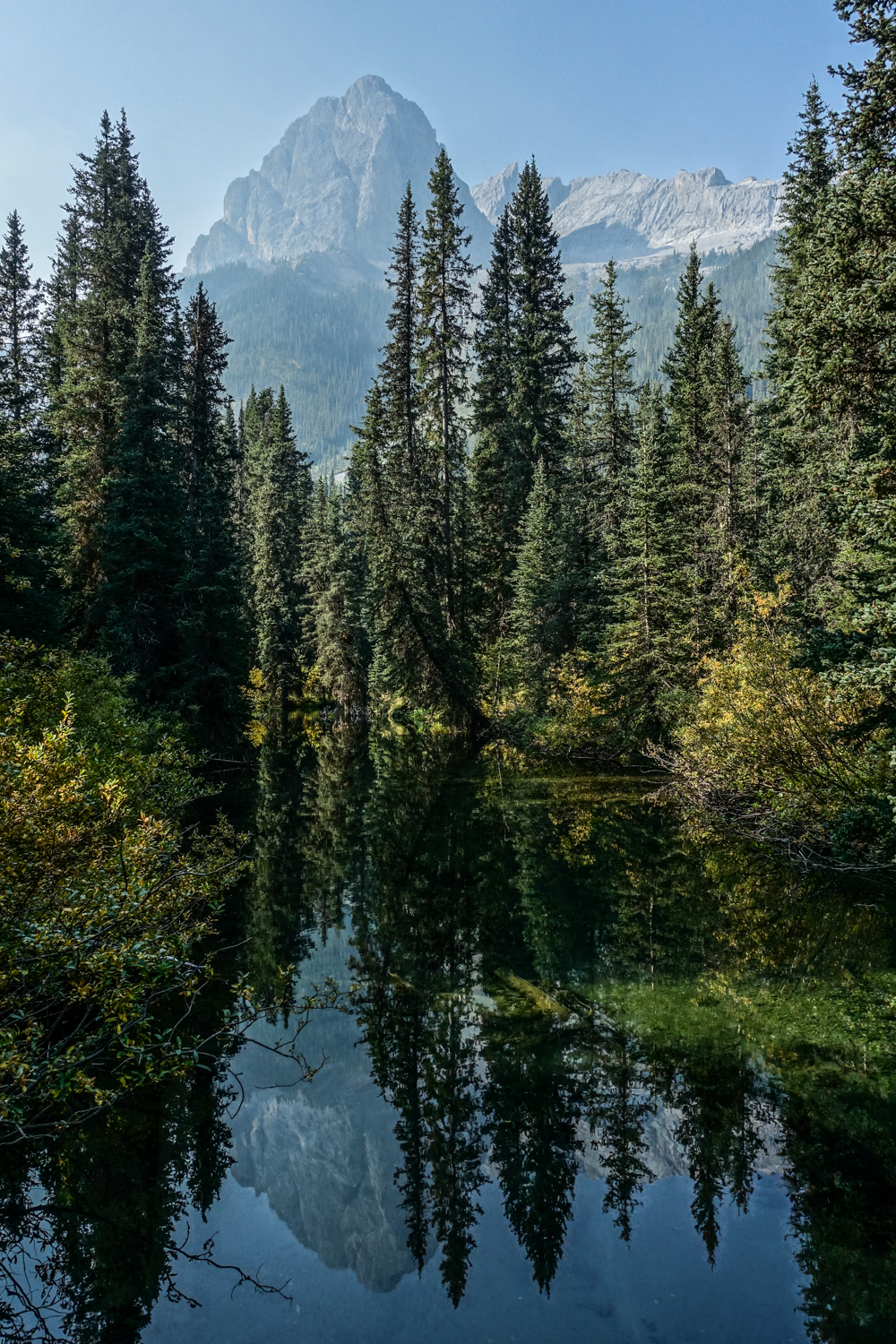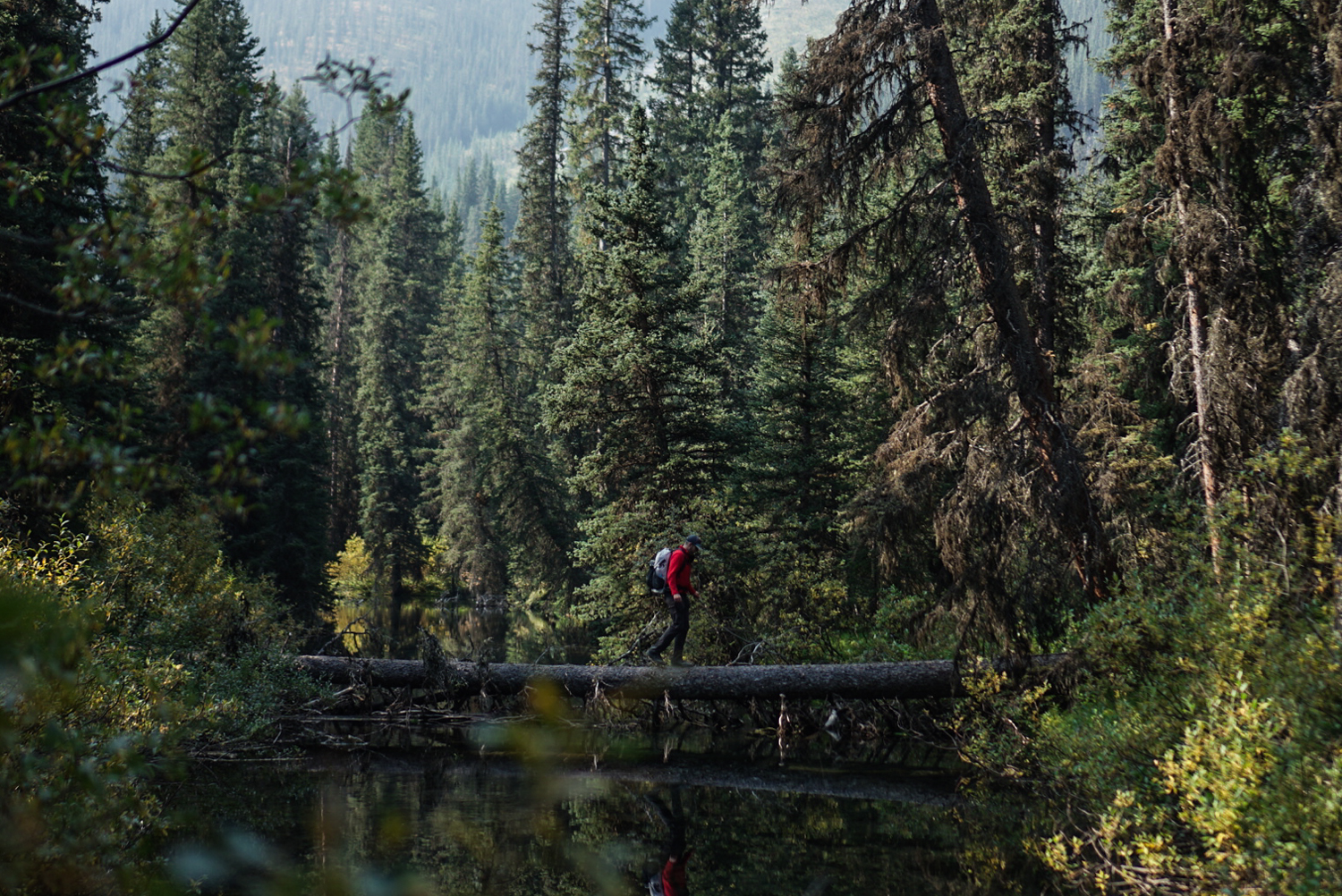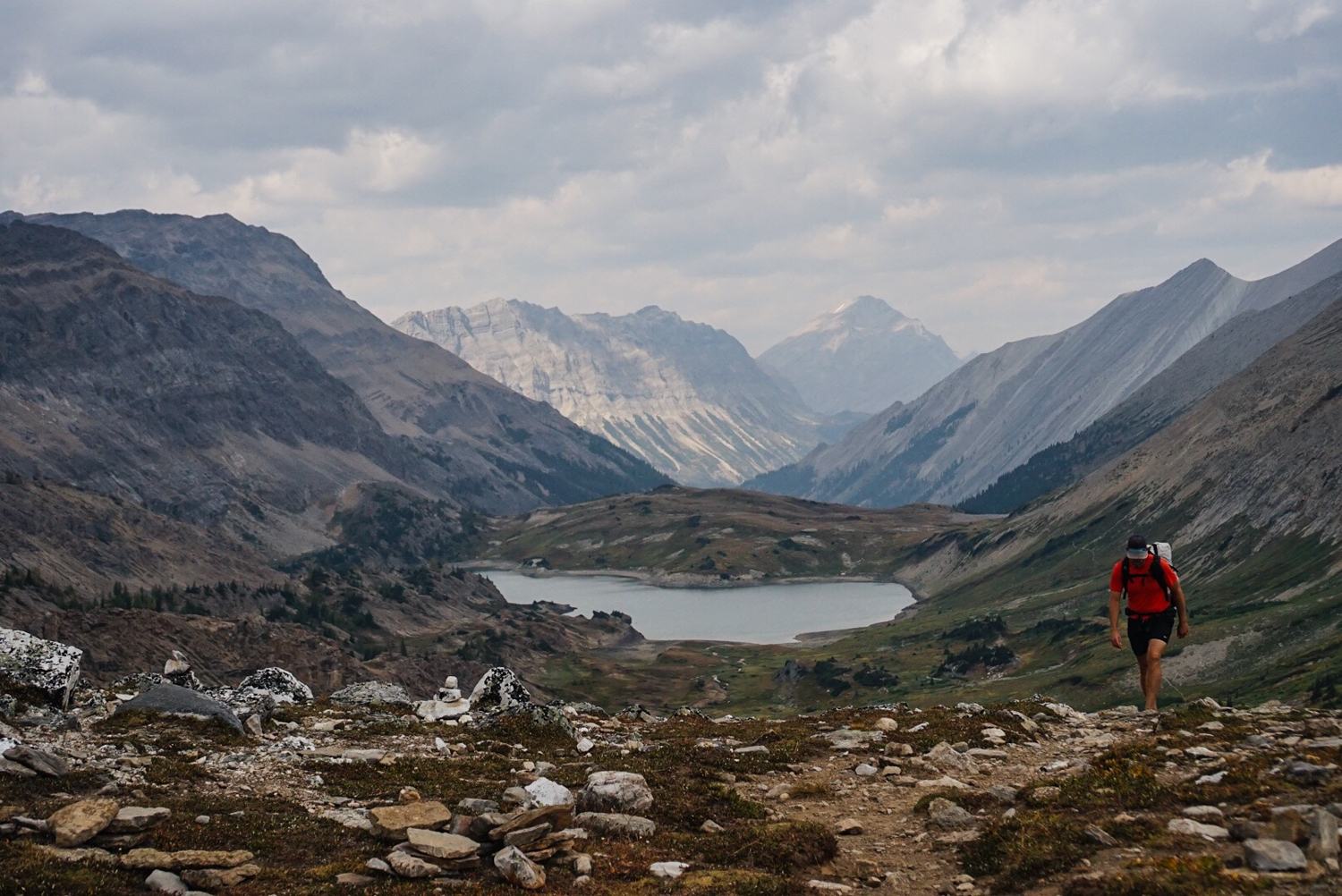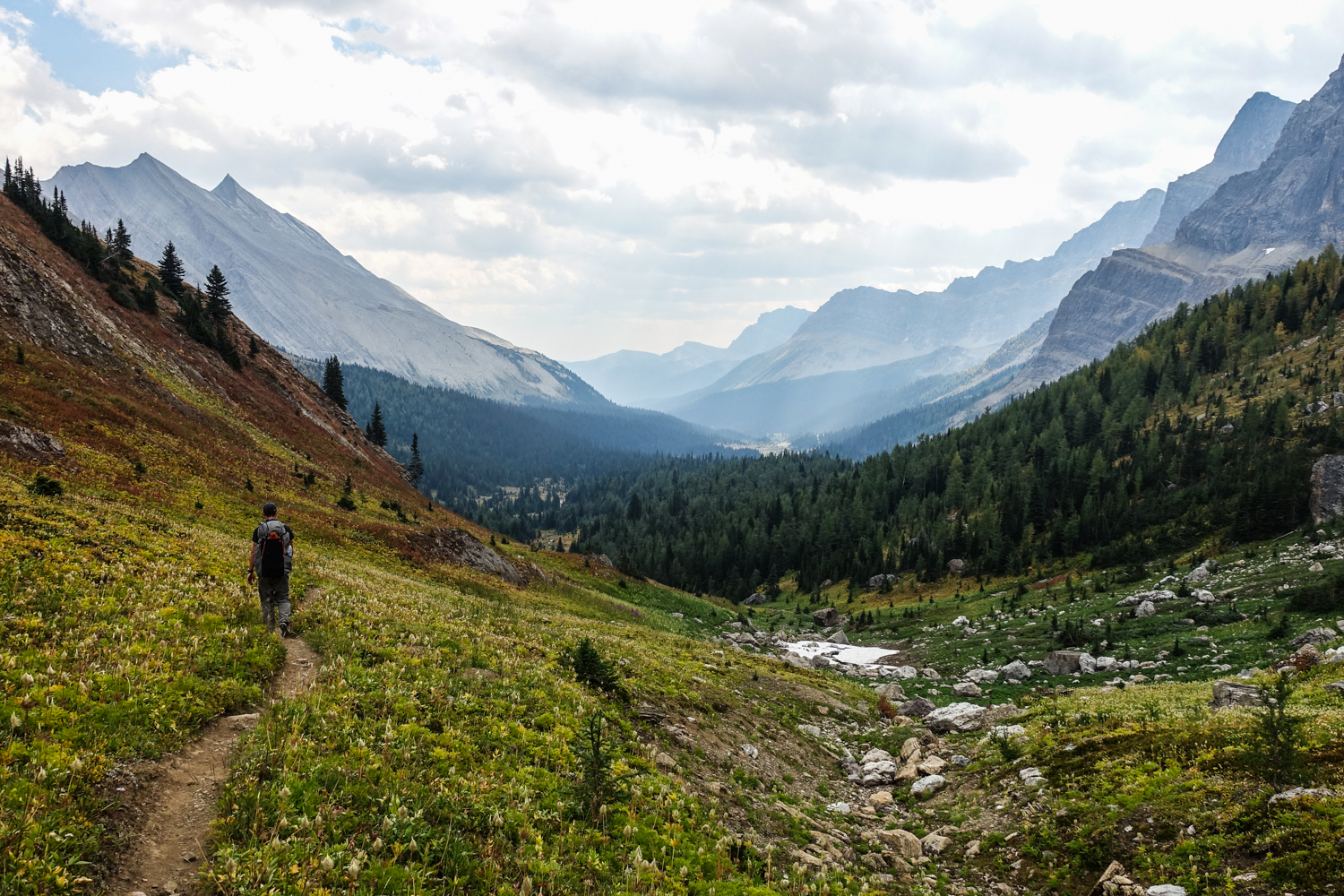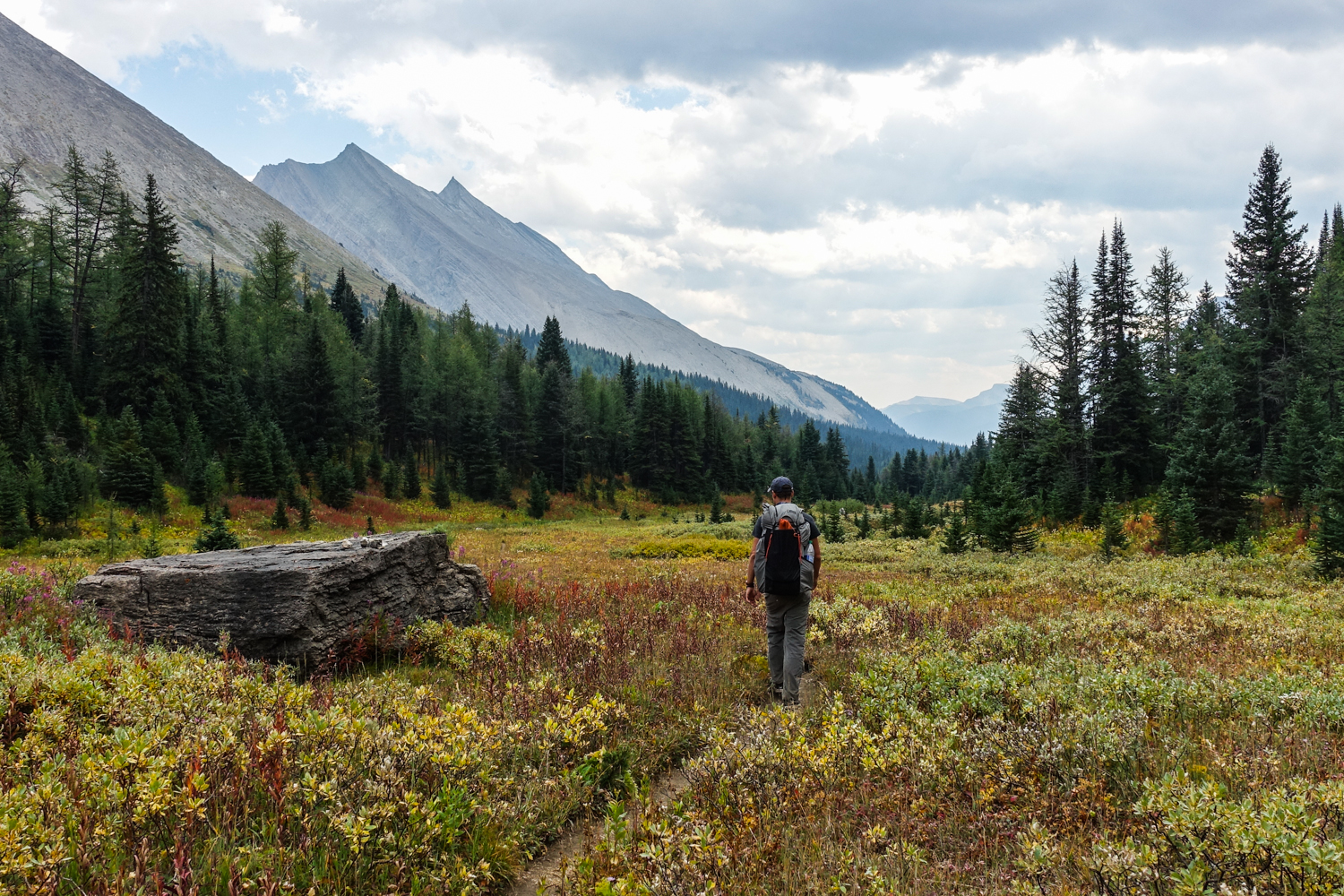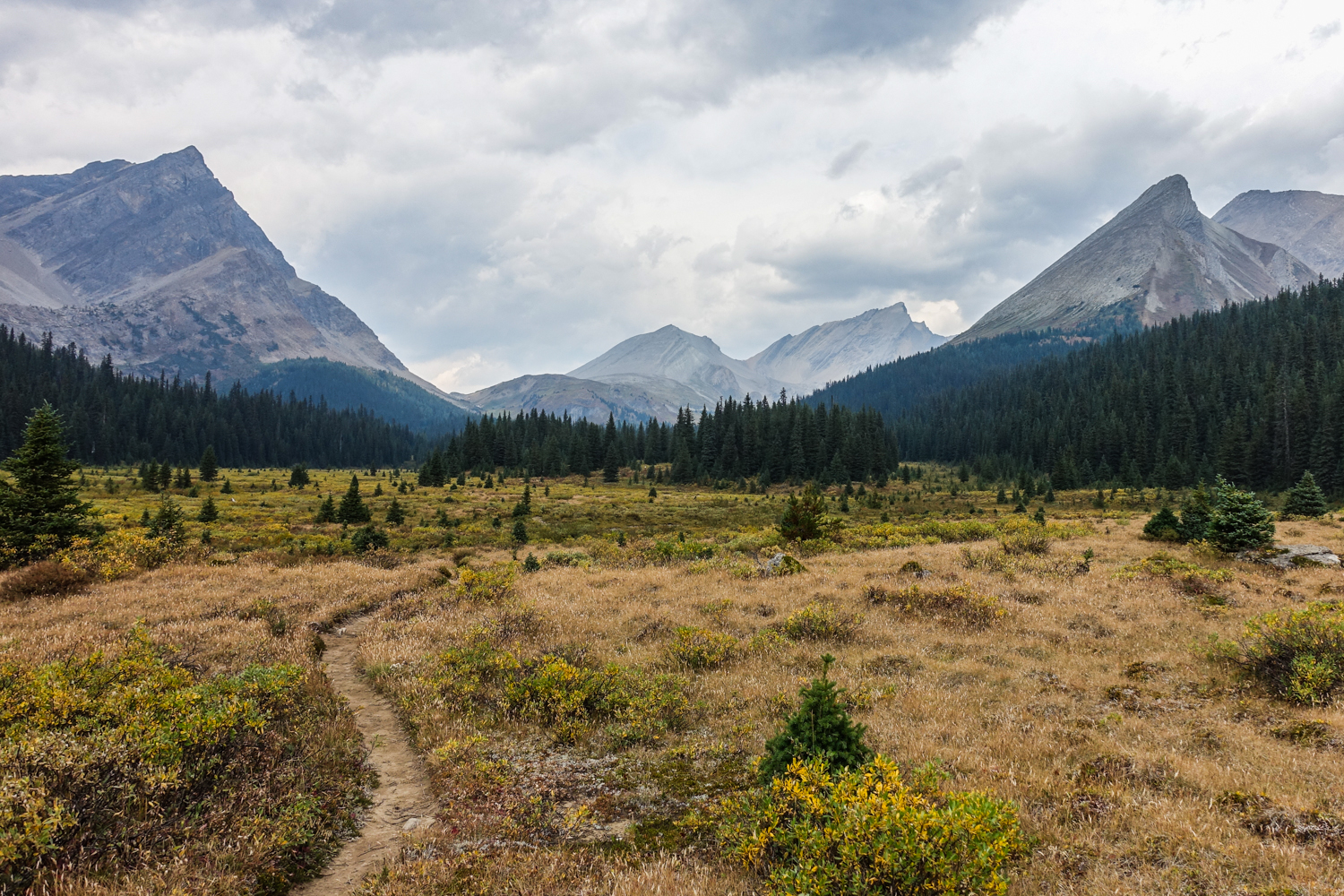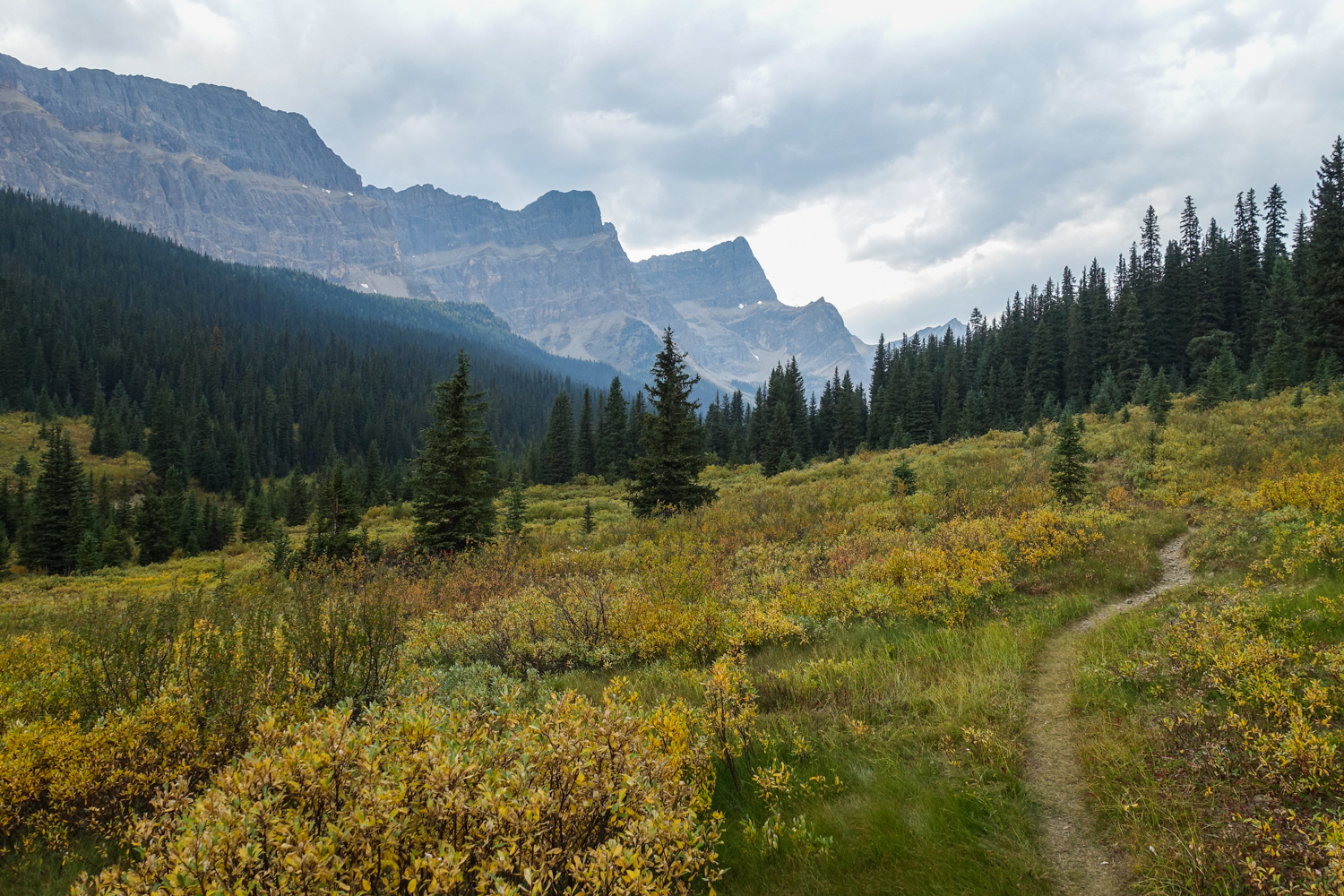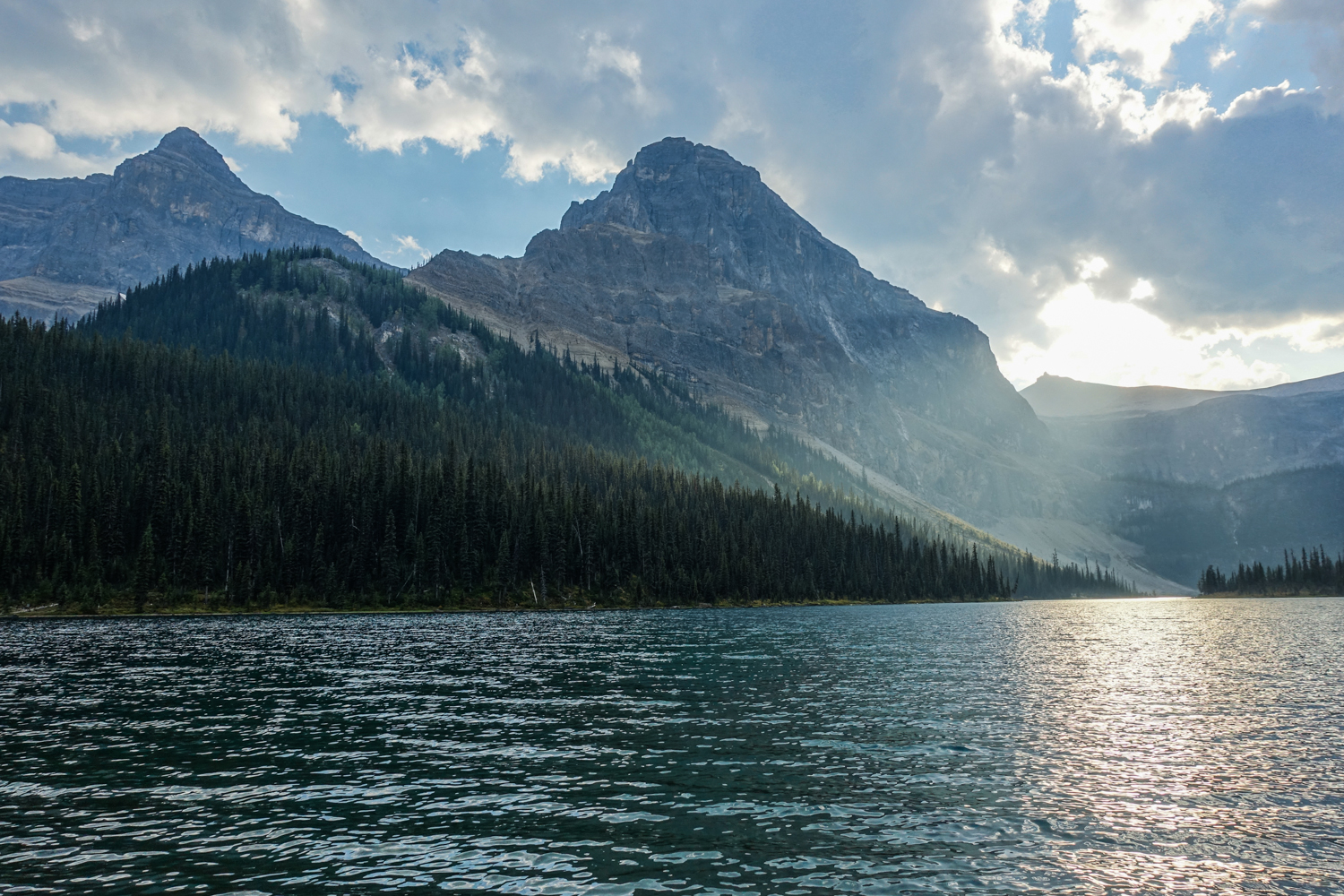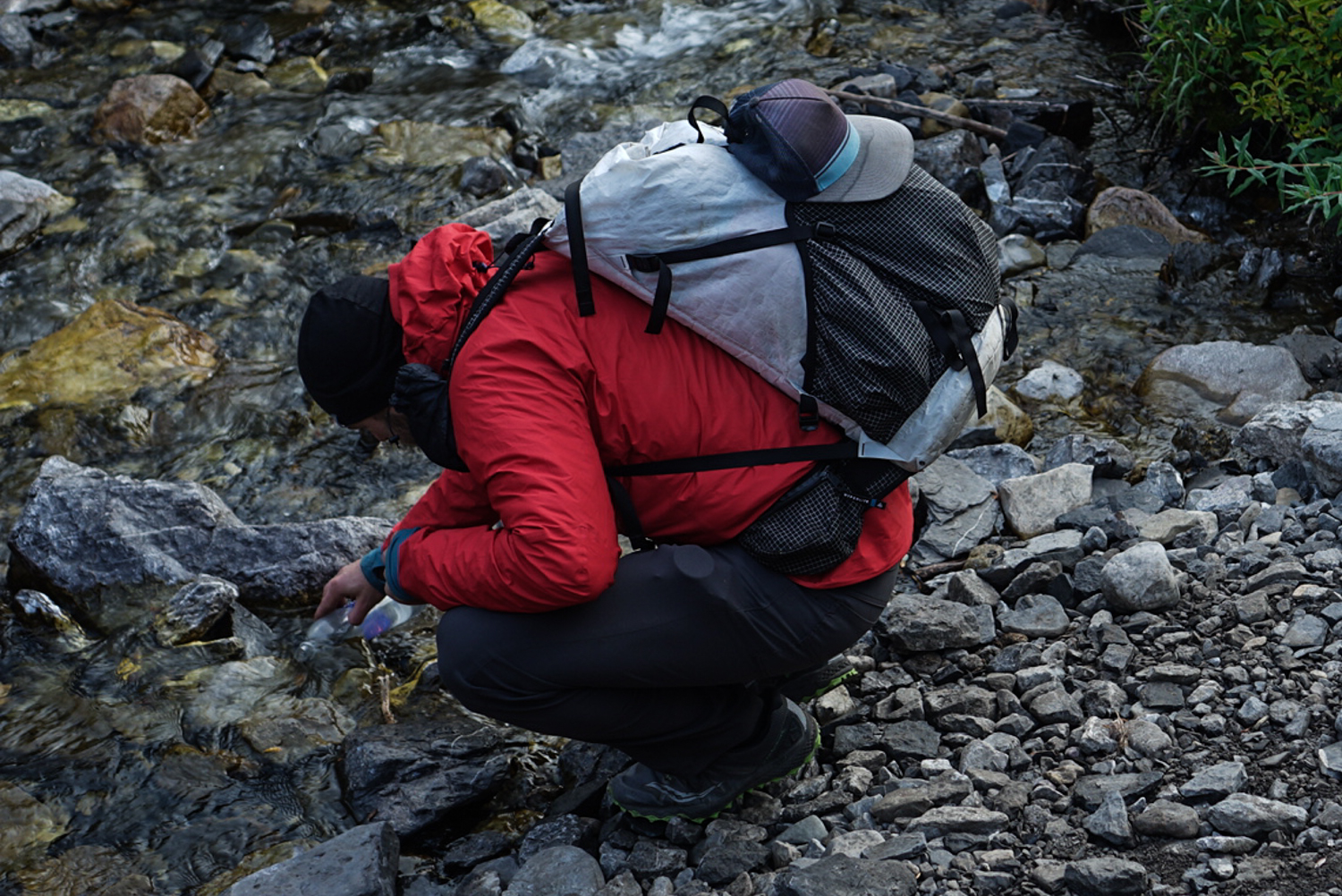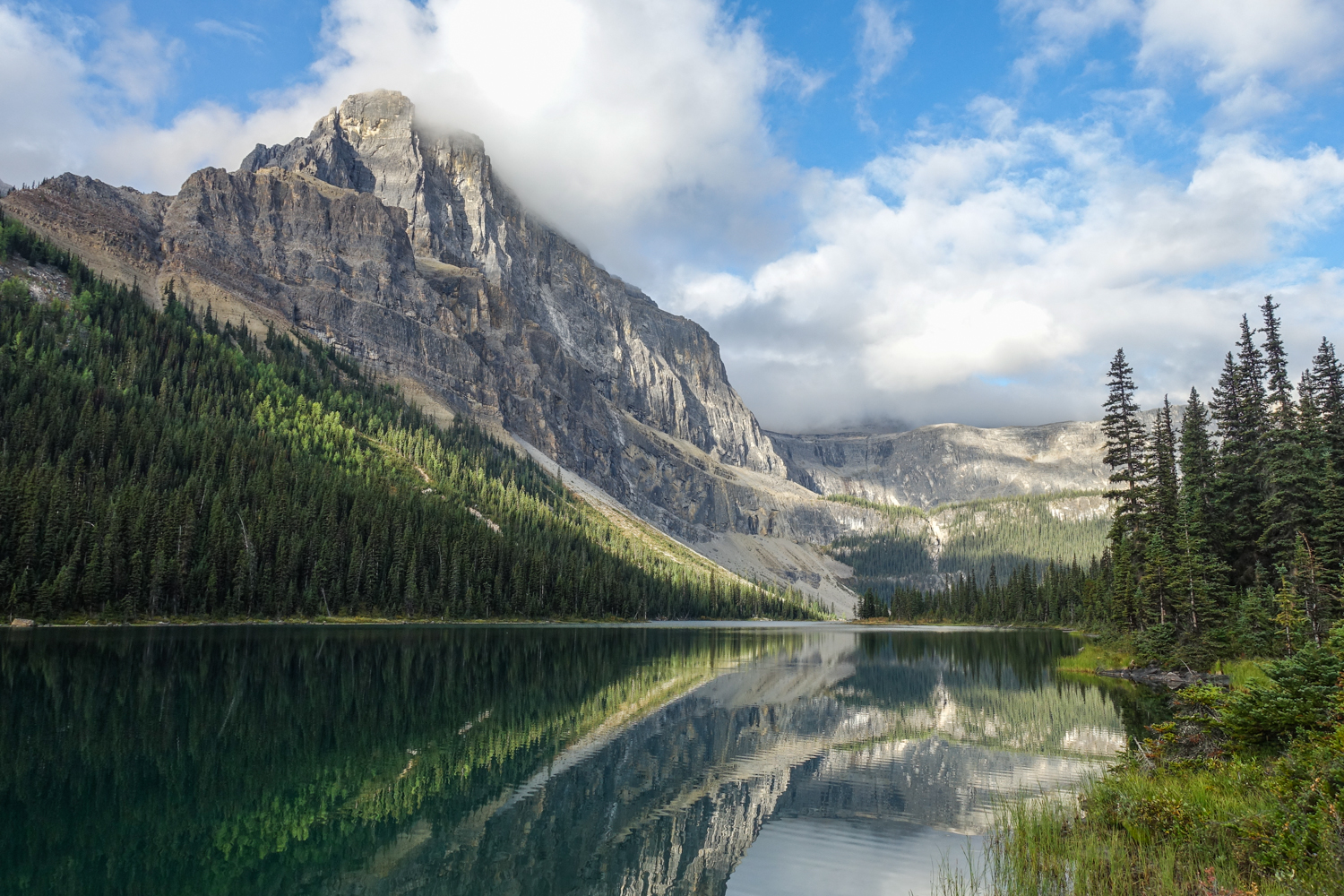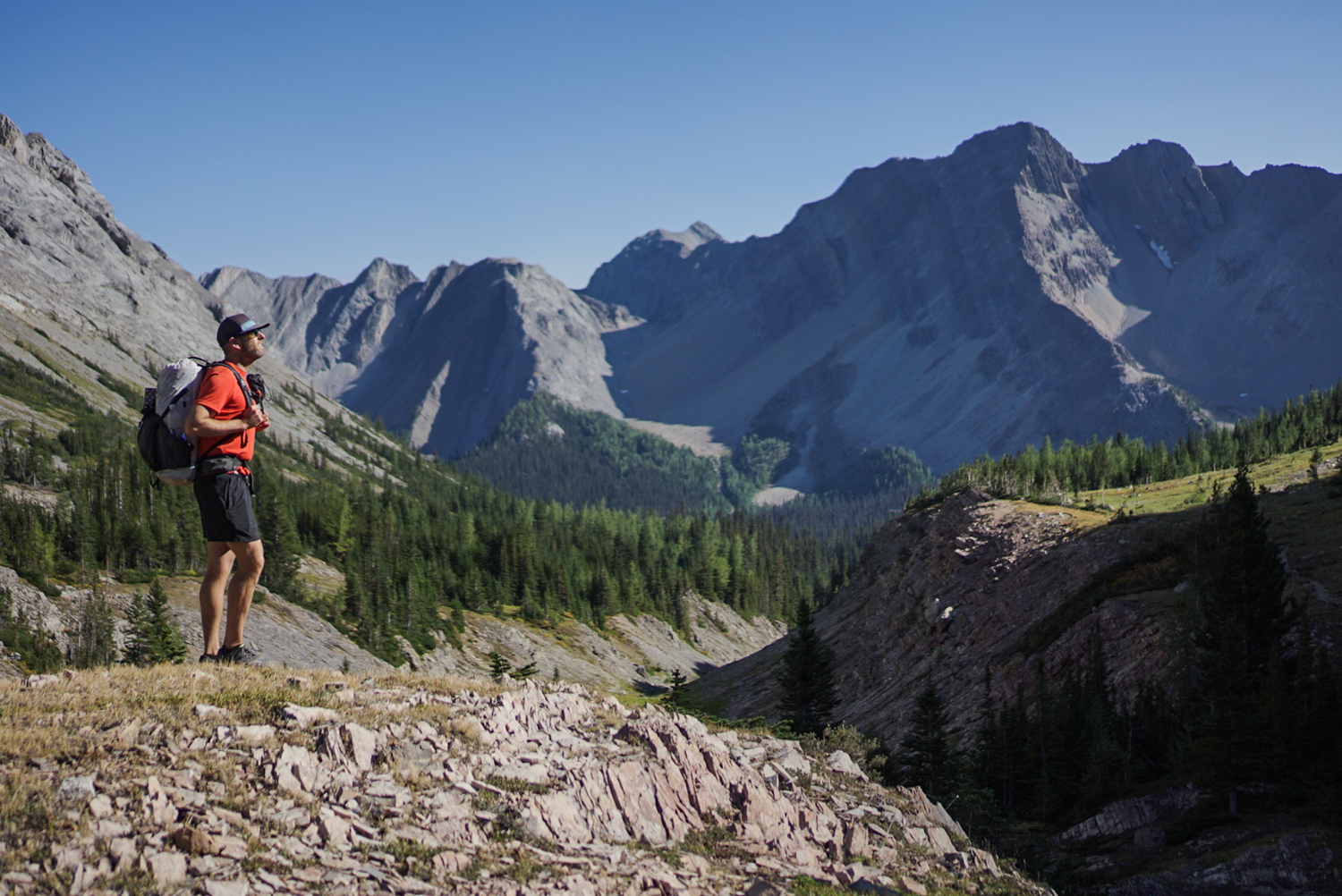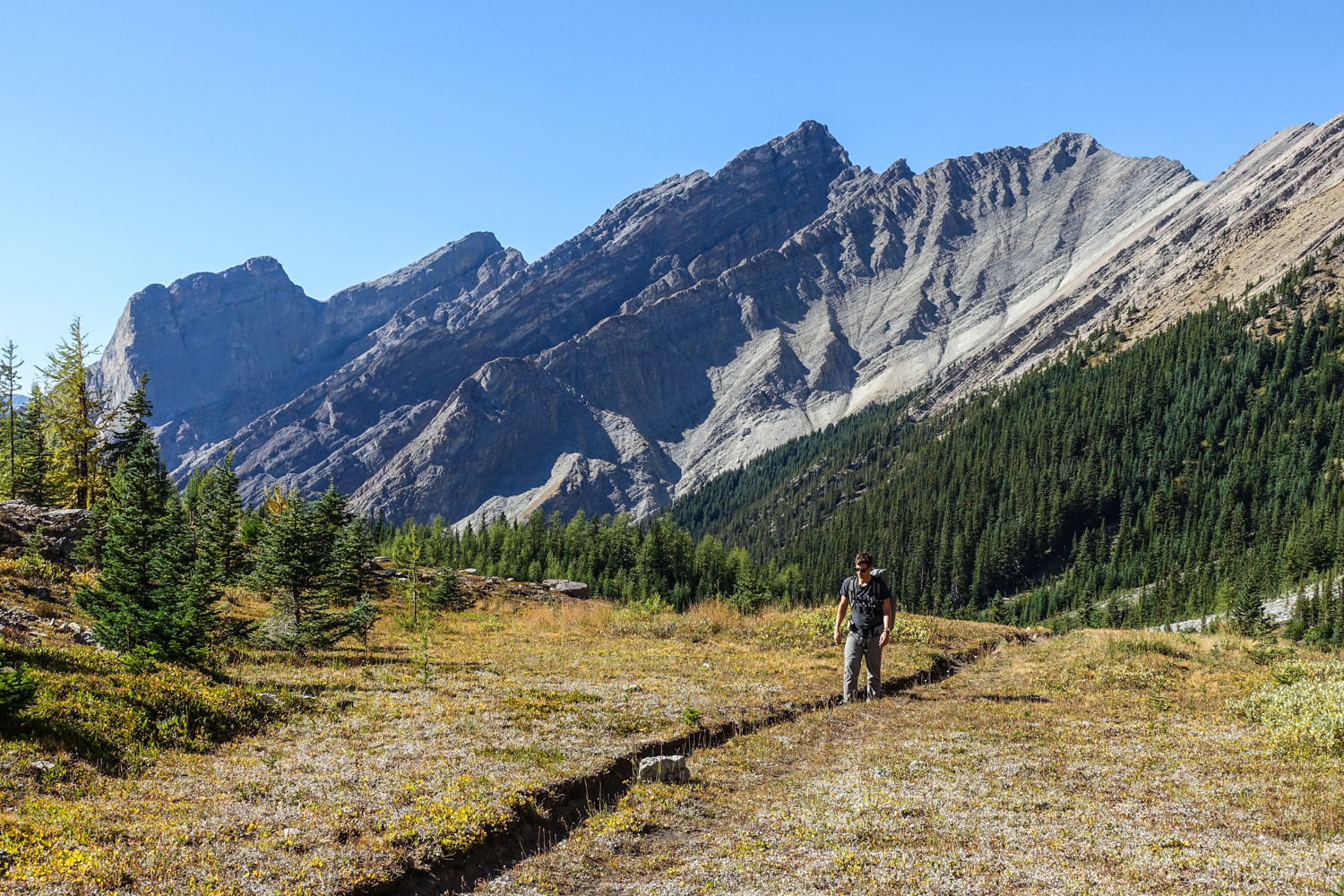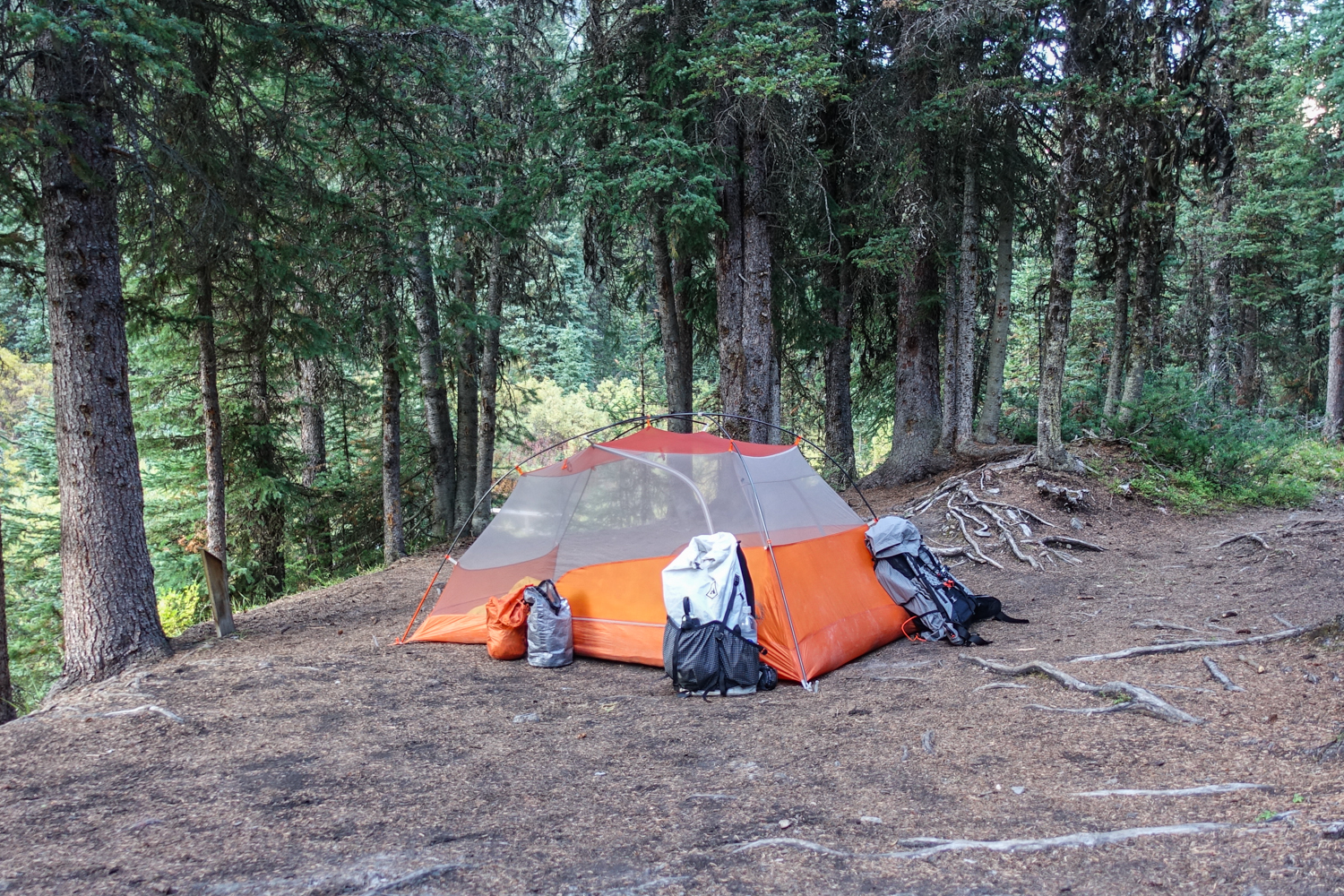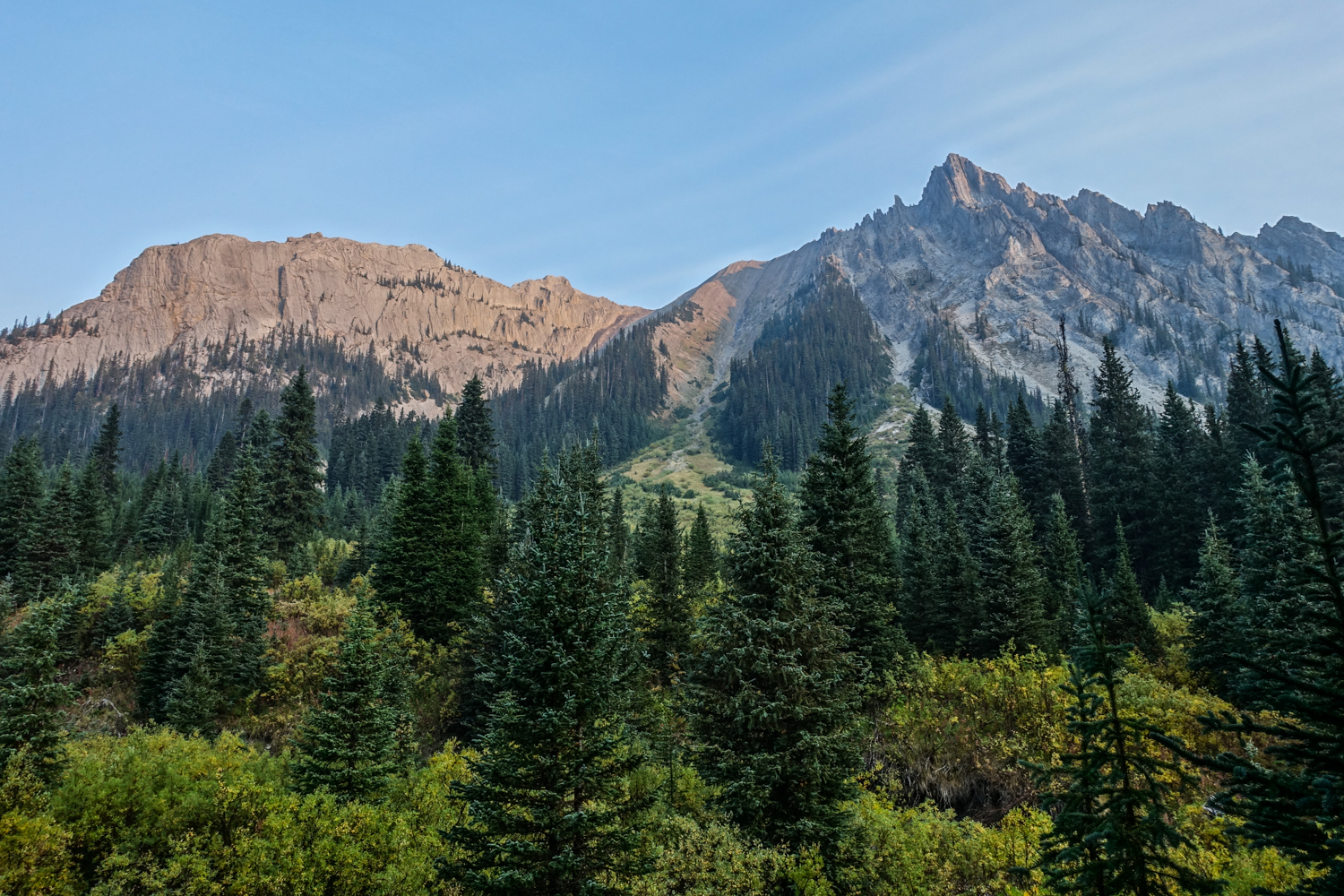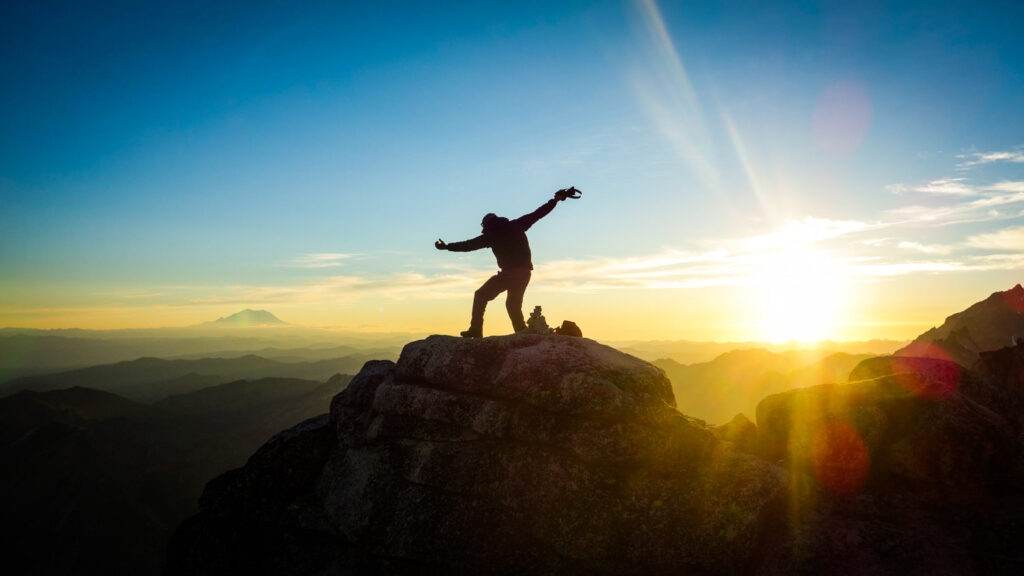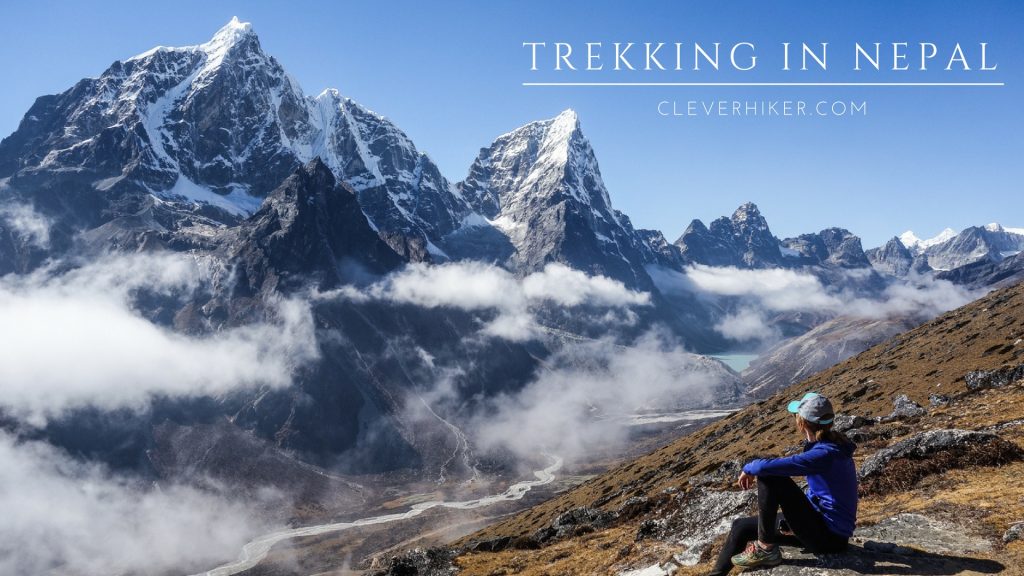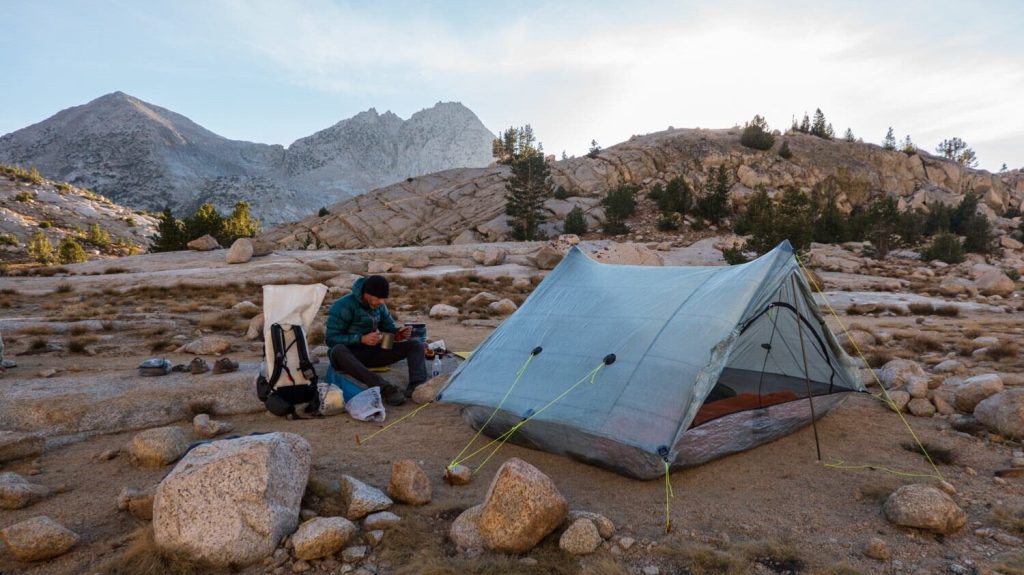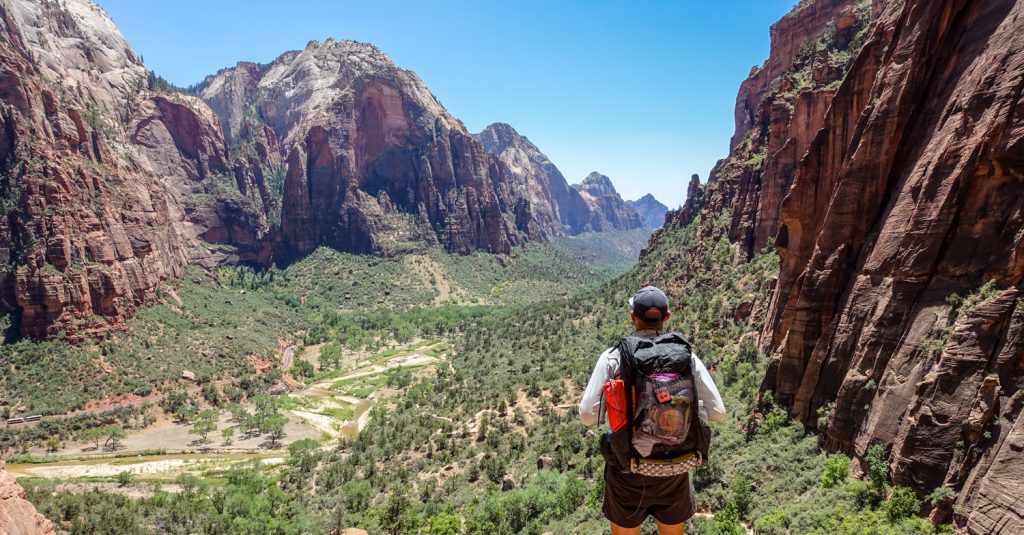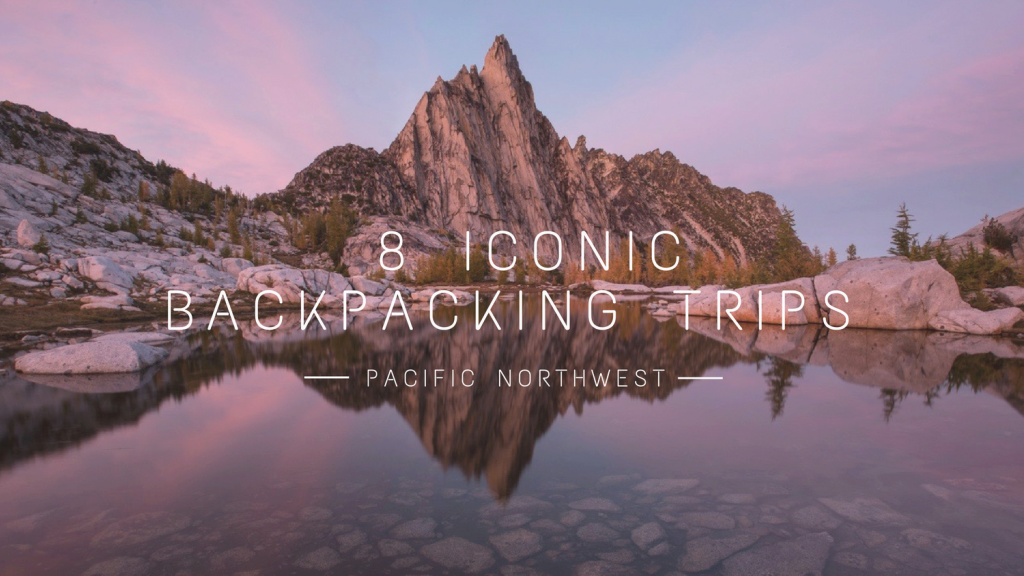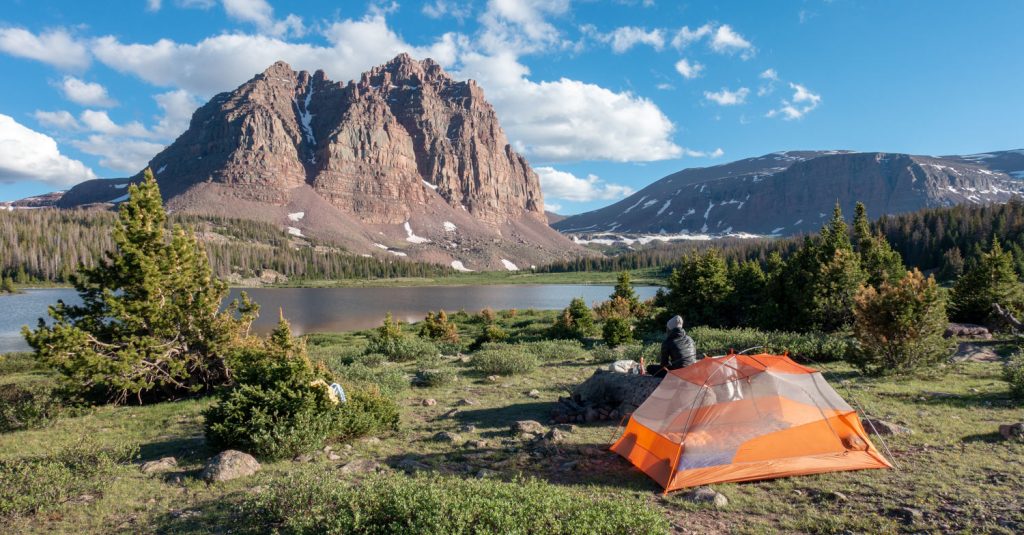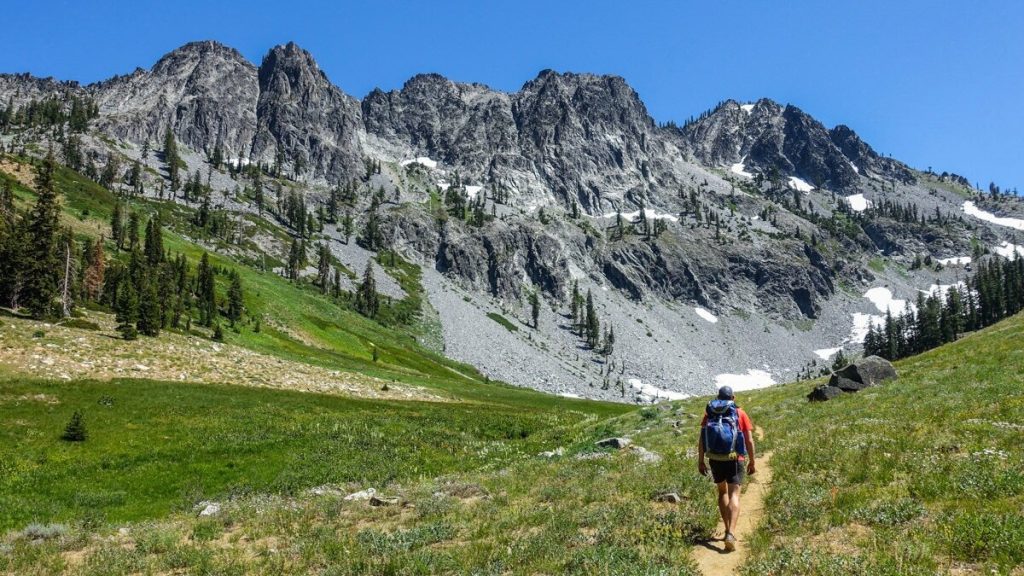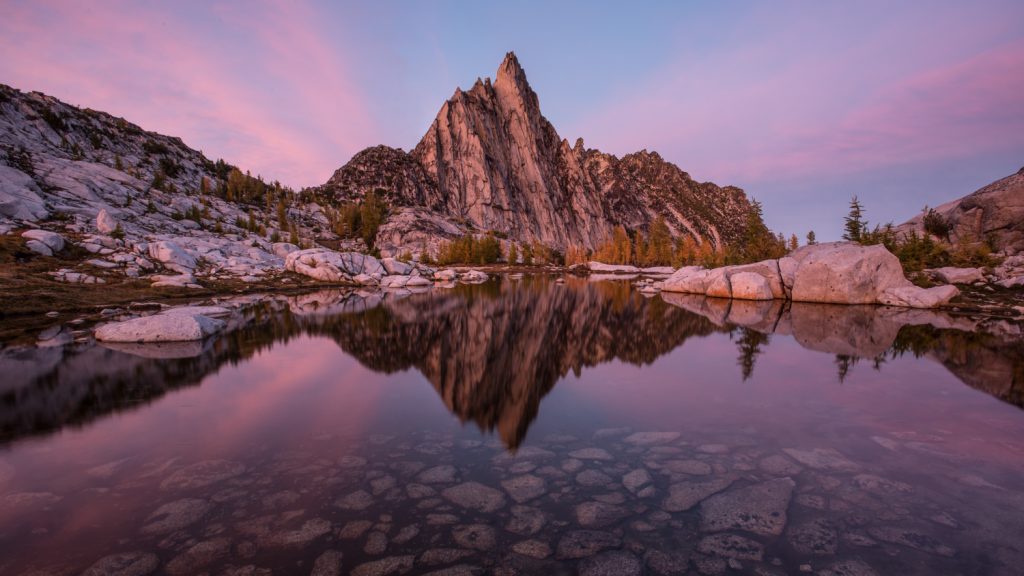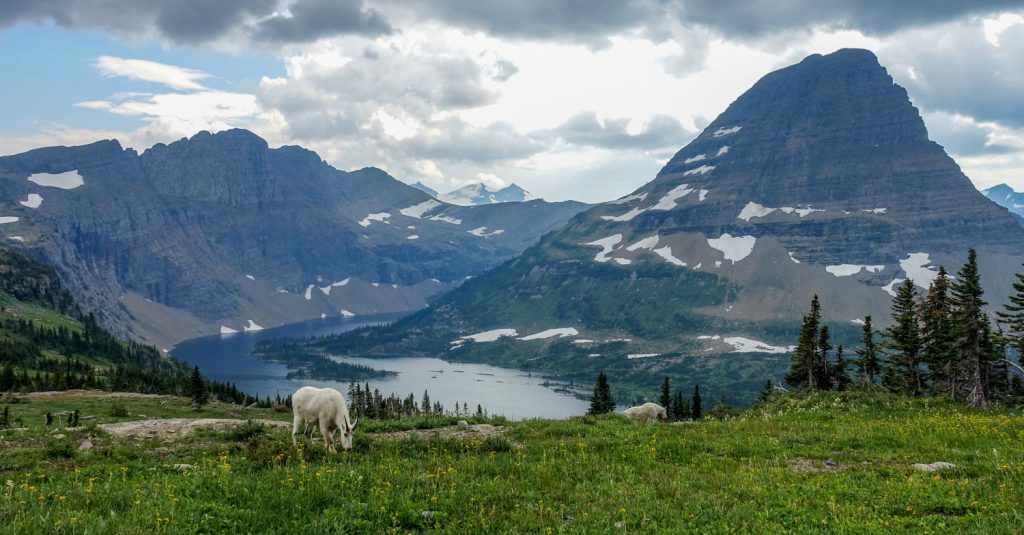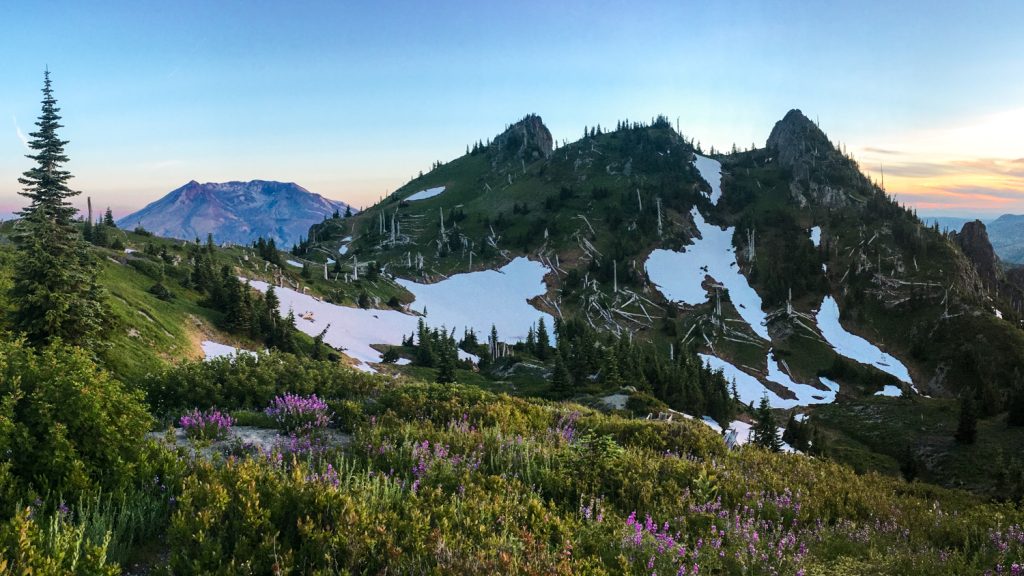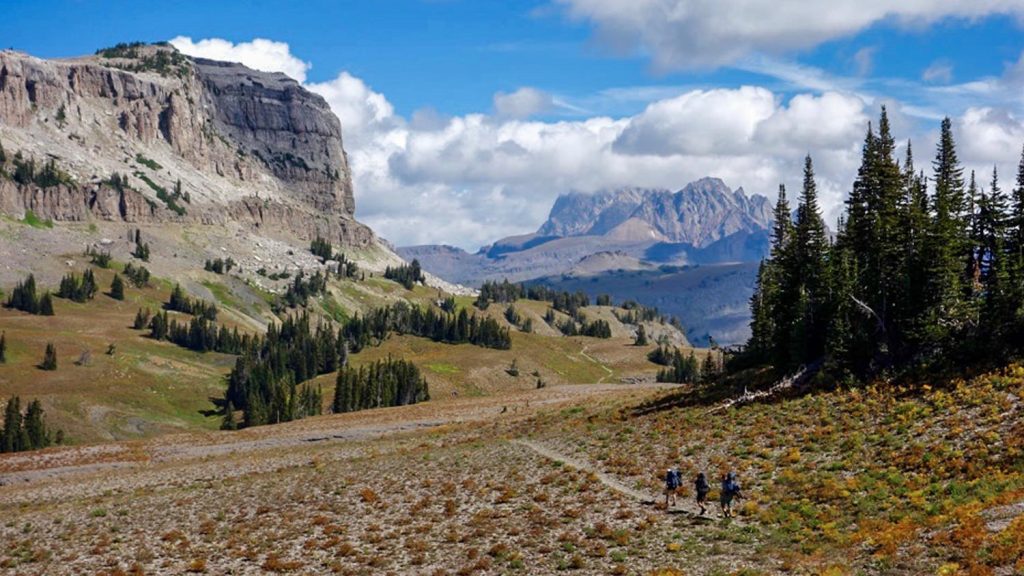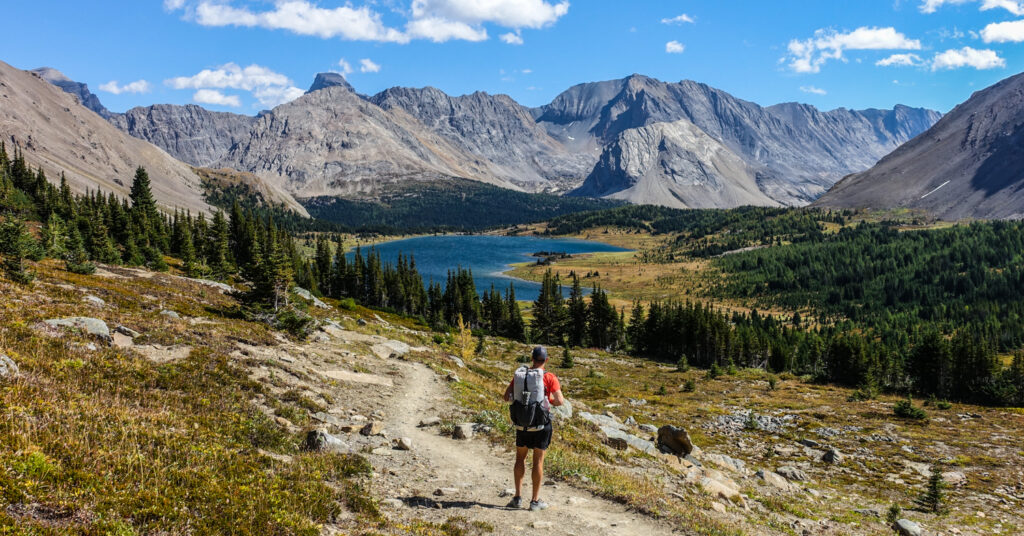
The Sawback Trail in Banff National Park is a 74 km (46 mile) traverse through the rugged and beautiful Sawback Mountain Range. Along the route, hikers climb over three spectacular passes and wind through meadows dotted with stunning alpine lakes. This trail spans a good portion of Banff National Park, stretching from the Lake Louise area to the town of Banff. With most people flocking to crowded trails on the west side of the Trans Canada Highway, this trek provides a true backcountry feel in a stunningly beautiful wilderness.
Quick Facts
Distance: 74 km (46 miles)
Days Needed: 4-6 days
Elevation Gain/Loss: 734 meters (2,408 feet)
Best Travel Time: Late July – September
Permits: Required, see below
Difficulty: Moderate to Difficult
Highlights
- Beautiful mountain passes and high alpine scenery
- Relative solitude, less crowded than other trails in Banff
- Good side trips (Badger pass, Ink Pots, etc.)
- Good shuttle/hitchhike options with trailheads in popular areas
Lowlights
- Competitive permit process
- Can be susceptible to quickly changing weather
- Seasonal bugs and snow
- Campfires prohibited
- Heavy horse travel from Cascade Amphitheatre Trailhead to Mystic Junction
- Route finding required from Baker Lake to Wildflower Creek
Sawback Photos
*Thanks to our good friend Marshall Lee (@mwalkerlee) for sharing some of his fantastic photos with us.
Best Time to Travel
In general, July through September is the best time to hike the Sawback Trail. Snowpack is a key factor for trip planning in this area, as snow can linger on passes until late in the year. Rain and snow can fall at any time of year here and freezing temperatures are possible as well, even in summer months.
As always, be prepared and diligent in monitoring current conditions as weather can change quickly in the mountains. Before heading out, check the Banff National Park trail reports for up-to-date conditions.
Difficulty
- Total Distance: 74 km (46 miles)
- Total Elevation Gain/Loss: 734 meters (2,408 feet)
- Overall Difficulty: Moderate – Difficult
We rate this hike as moderate to difficult due to some big climbs and occasional route finding.
As always, difficulty ratings depend on your experience, physical fitness, pack weight, & weather conditions. This is not a technically demanding hike, but like any backpacking trip, you should plan accordingly, train properly, know your limitations, brush up on your skills, and dial in your gear. Doing so will make for a safe and enjoyable adventure.
Permits
According to the Parks Canada site, a backcountry permit and campground reservations are mandatory for anyone planning an overnight trip into the backcountry of Banff National Park. When making a reservation, you must specify the campgrounds you wish to book, as well as the number of people and tents in your group. Permits can be obtained online at reservations.pc.gc.ca or by calling 1877-737-3783. According to the Parks Canada site, reservations are available beginning in January for visits throughout the calendar year.
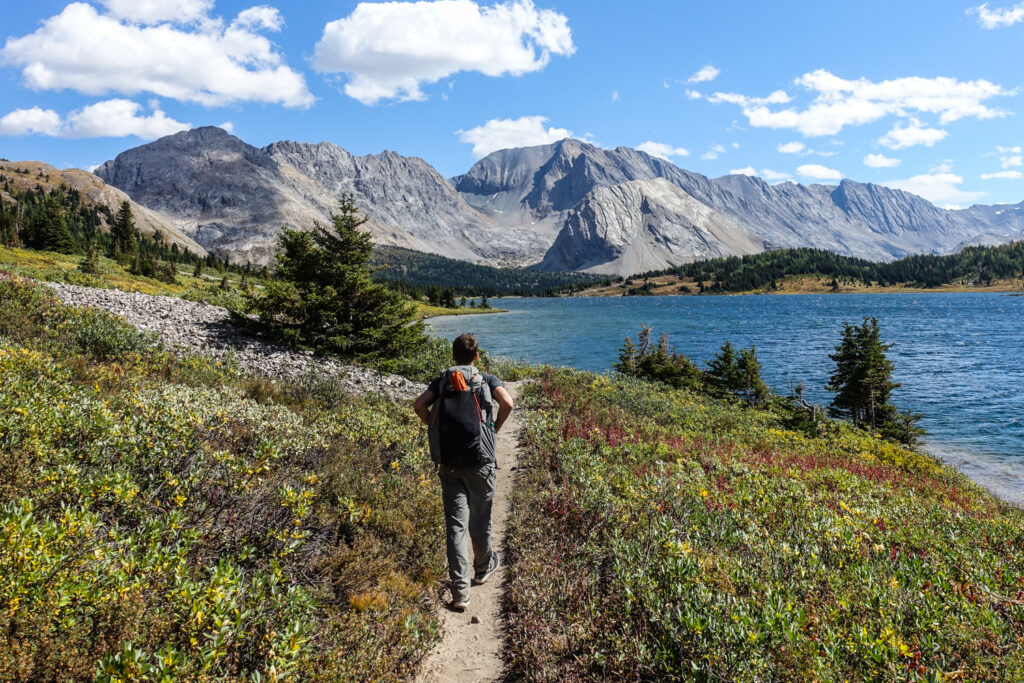
Getting to Trailheads
The Sawback Trail spans from the Lake Louise Ski Resort (Fish Creek Trailhead) to the Mount Norquay Ski Resort (Cascade Amphitheatre Trailhead) just outside of Banff. You are able to hike this trail in either direction.
Fish Creek Trailhead: If you are traveling from Lake Louise to Banff, you will begin at the Fish Creek Trailhead near the Lake Louise Ski Resort. To get here from Lake Louise, head southeast on Lake Louise Drive. Continue on Fairview Rd. Take Pinnacle Drive to Lake Louise Drive. Take Bow Valley Pkwy/AB-1A E to Whitehorn Drive. Follow Whitehorn Drive until you see your destination. There is also a free shuttle service which connects Lake Louise Village to the Lake Louise Ski Area.
Cascade Amphitheatre Trailhead: If you are traveling from Banff to Lake Louise, you begin at the Cascade Amphitheatre Trailhead near the Mount Norquay Ski Resort, which is located 6 kilometres (4 miles) from the town of Banff. If driving from Banff, head west on Wolf St toward Banff Ave. Turn right onto Lynx St and continue onto Mt Norquay Rd. After continuing onto Mt Norquay Scenic Dr, the ski area will be on your left. There is also a free shuttle service which connects Banff to the Mount Norquay Ski Area.
Campsites
There are nine campsites along the Sawback Trail with an additional two campsites (Merlin Meadows and Red Deer Lake) if you choose to explore the beautiful Skoki Lakes region. When planning your trip, you will need to have your route established and book each individual campsite. For more information on campsites, visit Parks Canada Reservation website. Below are the campsites from the Lake Louise Ski Area/Fish Creek Trailhead.
- Hidden Lake
- Baker Lake
- Wildflower Creek
- Badger Pass Junction
- Johnston Creek
- Luellen Lake
- Larry’s Camp
- Mystic Valley
- Mount Cockscomb
Below is a map provided by the Parks Canada Reservation showing milage, campsites, and the general route of Sawback Trail (follow the red trail lines from Lake Louise in the upper left to Banff in the lower right. The green dots are the campsites).

Possible Itineraries
Most people complete the Sawback Trail in 4-6 days. Below are a few sample itineraries, but there are many different ways to trek this route. For more information on mileage between campsites, please refer to the Parks Canada Reservation website.
Three Night Option
- Starting Trailhead: Fish Creek/Lake Louise Ski Area
- Camp 1 – Wildflower Creek
- Camp 2 – Luellen Lake or Johnston Creek
- Camp 3 – Mystic Valley
Four Night Option
- Starting Trailhead: Fish Creek/Lake Louise Ski Area
- Camp 1 – Hidden Lake
- Camp 2 – Wildflower Creek
- Camp 3 – Luellen Lake or Johnston Creek
- Camp 4 – Mystic Valley
Five Night Option
This trip itinerary allows for extra time to explore the spectacular Skoki Lakes region and take a side trip to Badger Pass.
- Starting Trailhead: Fish Creek/Lake Louise Ski Area
- Camp 1 – Merlin Meadows
- Camp 2 – Baker Lake
- Camp 3 – Badger Pass Junction
- Camp 4 – Luellen Lake or Johnston Creek
- Camp 5 – Mystic Valley
Maps & Guidebooks
Lonely Planet: Banff, Jasper, and Glacier National Parks – We used this book for planning all our trips in this region. Although it provided a good overview, it did not give all the specifics needed to complete the Sawback Trail. Still a good resource though.
Banff & Mount Assiniboine Map – This topographical map provided all the details we needed on campsites, water sources, and mileage for the Sawback Trail.
Parks Canada Banff Park Website – We’ve been continually impressed with Parks Canada information on various trails. Their reservation system is straightforward and easy to use.
Note: At the time of this posting, basic route finding skills are required to follow the trail from Baker Lake to Wildflower Creek. The trail is sometimes easy to follow, but can can quickly be lost in wetland areas around Baker Creek. We recommend using a GPS device (we like the Gaia GPS phone app), carrying a map/compass, and brushing up on your navigation skills (Navigation #1 – Staying Found, Navigation #2 – Map, Compass & GPS) before your trip.
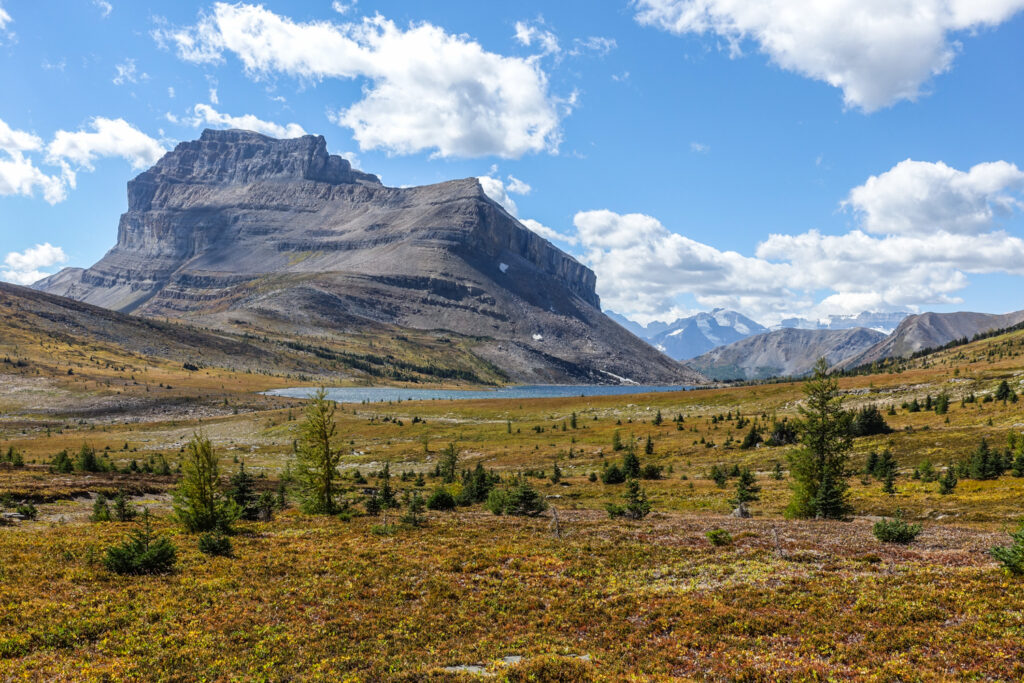
Water
Water is plentiful along this trail and easily accessible from small streams and lakes. Carry enough water to get from one source to the next and use a lightweight water purifier. We carried the SteriPEN Ultra and we were very happy with its performance. Another one of our lightweight favorites is the Sawyer Squeeze. Check out our best water purifiers list for our other top recommendations.
Bears & Food Storage
Banff National Park is home to a healthy grizzly and black bear population. At each campsite there are food storage facilities such as bear boxes or food storage cables. You will need to bring a small carabiner to attach your stuff sack to the storage cables. Please remember to stow away all food, garbage, toiletries, and cooking supplies in a dry stuff sack overnight. Abide by these regulations to limit bear-human interactions, which ultimately saves bear’s lives.
Bugs
Mosquitoes are seasonally present along the Sawback Trail, especially earlier in the season and at lower elevations. Hiking in September is often bug-free. Use a combination of permethrin on your clothing and a small amount of DEET on exposed skin for full protection.
More Sawback Photos
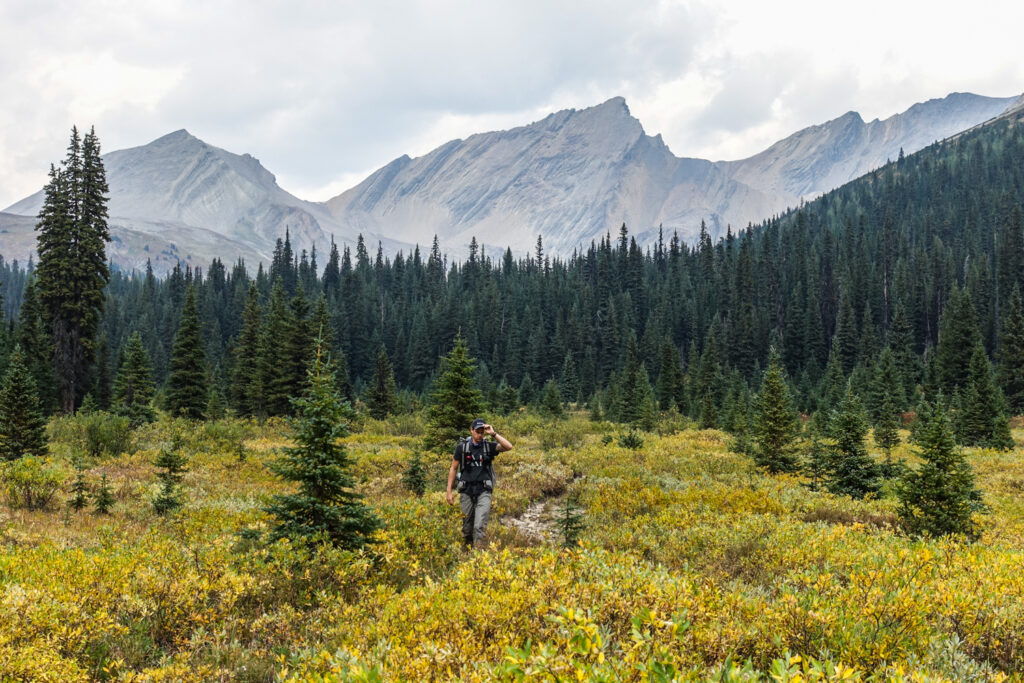
Backpacking Gear
We prefer lightweight backpacking because it’s more comfortable and it allows us to cover more ground with less effort. For recommendations on our favorite lightweight backpacking equipment, check out the CleverHiker Gear Guide and Top Picks page.
What To Pack
TENT
We used the Big Agnes Copper Spur HV UL2 tent on this trip for its lightweight livability and convenience. This tent is one of our all-time favorites and makes our list of the best lightweight backpacking tents.
BACKPACK
We used the HMG 2400 Southwest and the Gossamer Gear Mariposa 60 backpacks on this trek. Both are lightweight, convenient, comfortable, and make our list of the best lightweight backpacking packs.
SLEEPING BAG
We used the Enlightened Equipment Revelation quilt and REI Magma 10 Men’s sleeping bags on this trek for night time temperatures around freezing. Both sleeping bags are lightweight, incredibly warm, and make our list of the best backpacking sleeping bags.
SLEEPING PAD
We used the Therm-a-Rest NeoAir XLite and Sea to Summit UltraLight Insulated sleeping pads on this trip. Both are light, comfortable, warm, and make our list of the best backpacking sleeping pads.
COOKING SYSTEM
We used the BRS Stove, Snow Peak Mini Solo Cookset, and Snow Peak Folding Spoon on this trek, all of which make our top picks gear list and best lightweight stove list.
WATER PURIFIER
We used the SteriPEN Ultra as our main purification method on this trip. It’s lightweight, works fast, and doesn’t require any pumping/squeezing or chemicals. Check out our best water purifiers list for our other top recommendations.
SHOES OR BOOTS
We wore Saucony Peregrine 7 trail runners (men’s and women’s) on this trail and they were excellent. If you prefer boots, make sure they’re lightweight and break them in really well before your trip. Here’s why we prefer hiking in trail running shoes: 5 Reasons to Ditch Your Hiking Boots.
BEAR SPRAY
Banff National Park is home to a healthy grizzly and black bear population. We recommend hiking with bear spray and knowing how to use it properly. We also recommend reading Parks Canada’s in-depth information on Bears and People as you prepare for your trip.
HEADLAMP
A small headlamp like the Petzl Actik is an affordable, bright, and lightweight option.
FOOD
When backpacking the Sawback Trail you’ll have to carry all your food and use food storage cables provided at each campsite during the night. For some suggestions on common backpacking food options, check out our backpacking food video.
CLOTHING
Here are some of our favorite hiking/backpacking clothing items from our Top Gear list.
- 1 Rain jacket shell: Patagonia M10 / Rab Kinetic Plus
- 1 Pair rain pants: Mountain Hardwear Stretch Ozonic
- 1 Down jacket: Patagonia Ultralight Down Hoody
- 1 Fleece jacket: Extra warmth under your down jacket that will be warmer when damp and better to hike in.
- 1 Pair hiking pants or running tights
- 1 Pair hiking shorts: Nike dri fit running shorts
- 1-2 Hiking t-shirts: Nike dri fit t-shirts
- 1 Long-sleeve shirt: Nike dri fit quarter zip
- 1-3 Pair underwear: ExOfficio boxer briefs or or ExOfficio women’s briefs
- 2-3 Pair socks (add thin sock liners if using boots): Balega running socks for warm weather & SmartWool mountaineer socks for snow.
- 1 Pair long john bottoms: long john top optional for nighttime use.
- 1 Warm hat
- 1 Sun hat
- 1 Pair gloves or mittens
MAP &COMPASS
Trails on this route are well-marked and maintained, with the exception of the stretch from Baker Lake to Wildflower Creek (read Maps & Guidebooks section above). Like all backpacking trips, you’ll want to hike this route with a good map and compass. We hiked with the Banff & Mount Assiniboine Map, which provided detailed information on campsites, trails and milage. In addition, we always hike with a quality compass, though the trails were easy to follow and we didn’t end up needing it on this trip.
FIRST AID KIT
Always bring a small personalized first aid kit. We used the .5 Ultralight Kit and added extras, like painkillers and personal medications.
SUN PROTECTION
Sunglasses (polarized recommended), sunscreen, and spf lip balm are an absolute must on every backpacking trip.
POCKET KNIFE
We brought along a small Swiss Army Knife, which came in handy here and there.
OTHER ITEMS:
- Small towel: the Nano pack towel is great.
- Cash and ID
- Permits
- Personal toiletries
- Hand sanitizer: Always apply after using a bathroom and before eating.
- Wet wipes: These can be useful for cleaning up after hiking.
- Insect repellantT: At higher elevations insects weren’t a problem for us at all. For lower elevations, a 1oz bottle of DEET will do the trick.
- Camera: The Sony RX100 is our go-to camera for lightweight backpacking.
